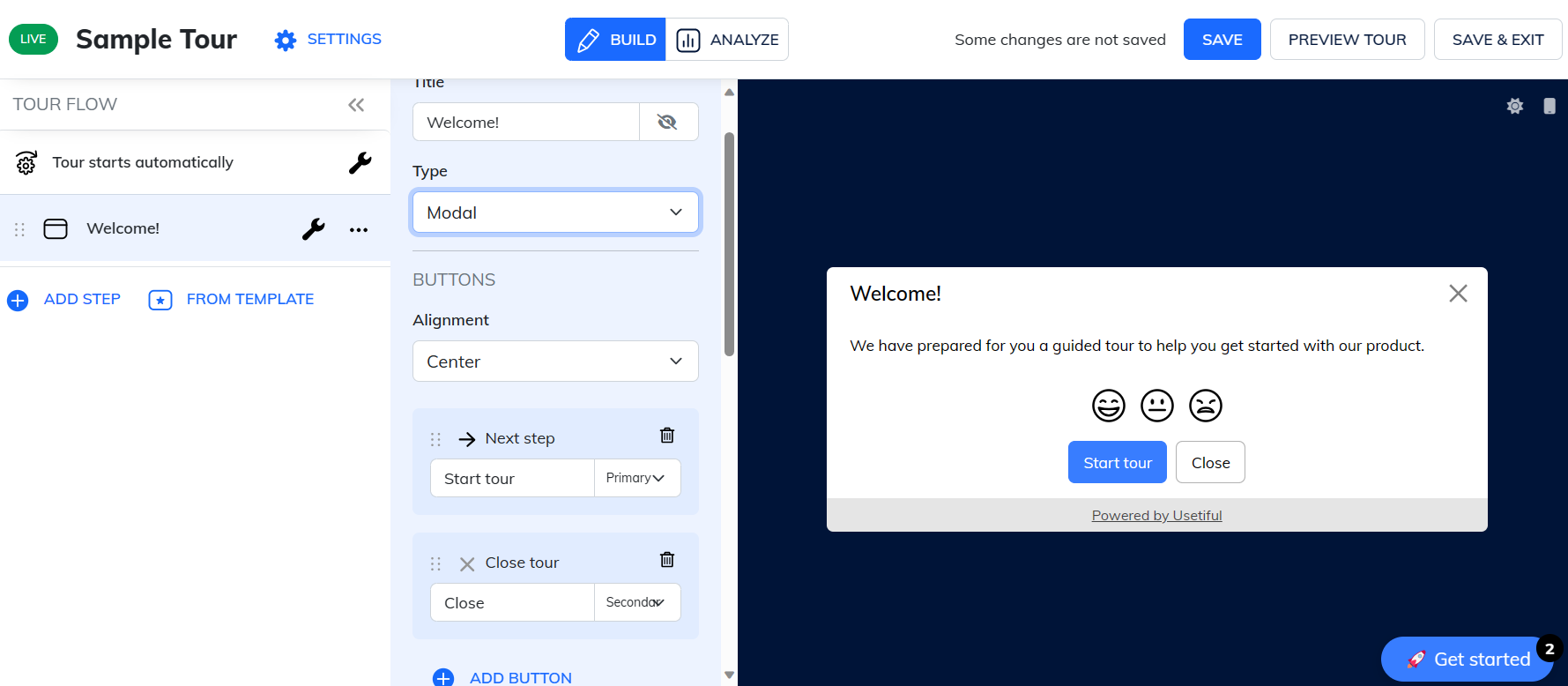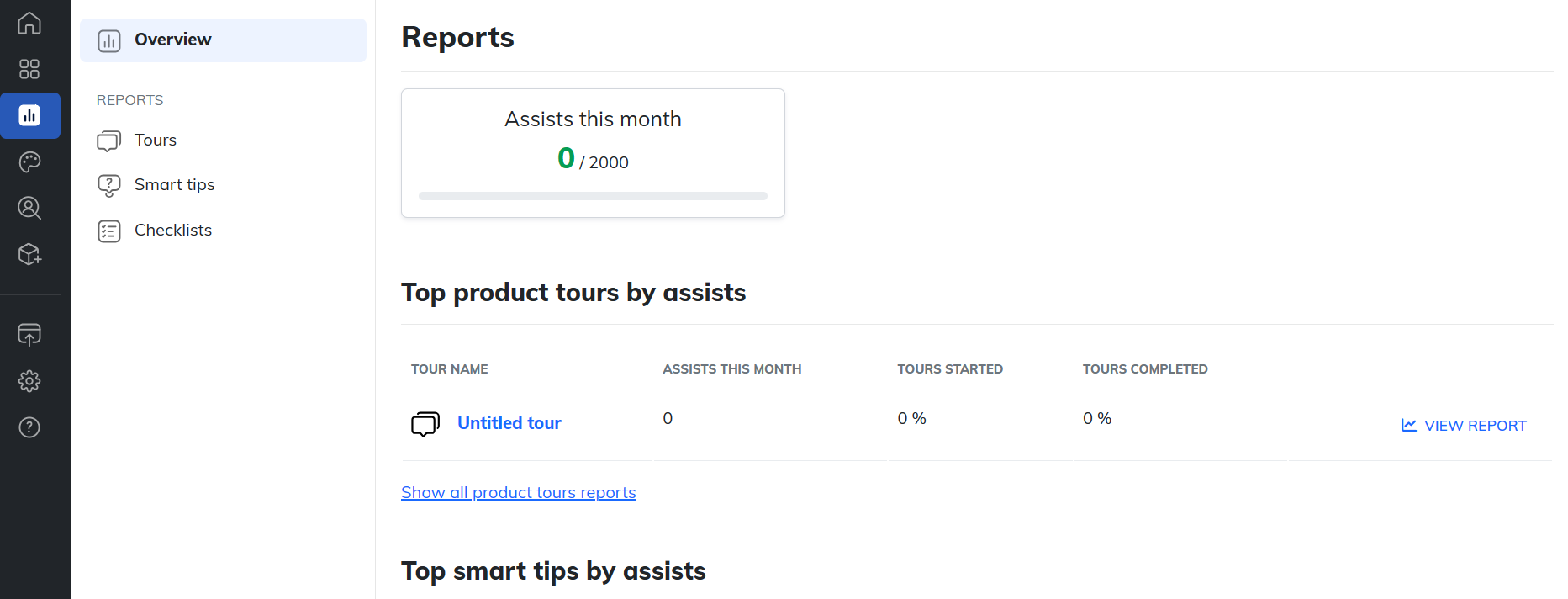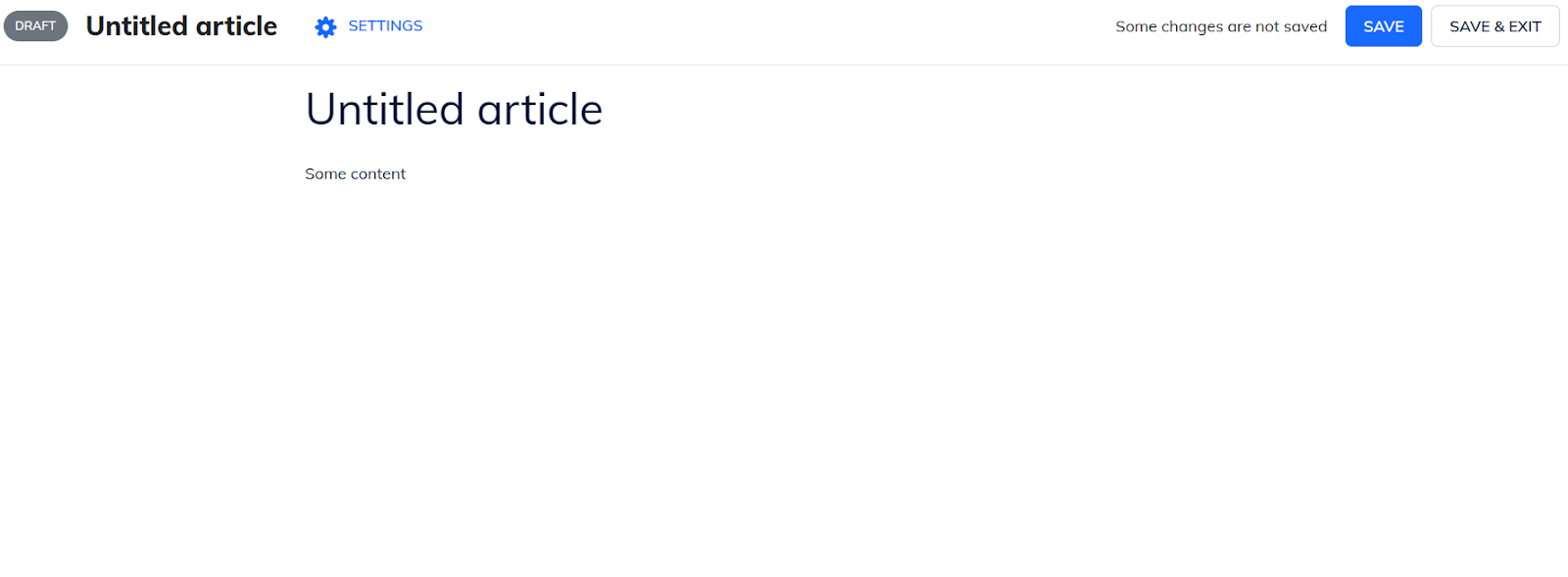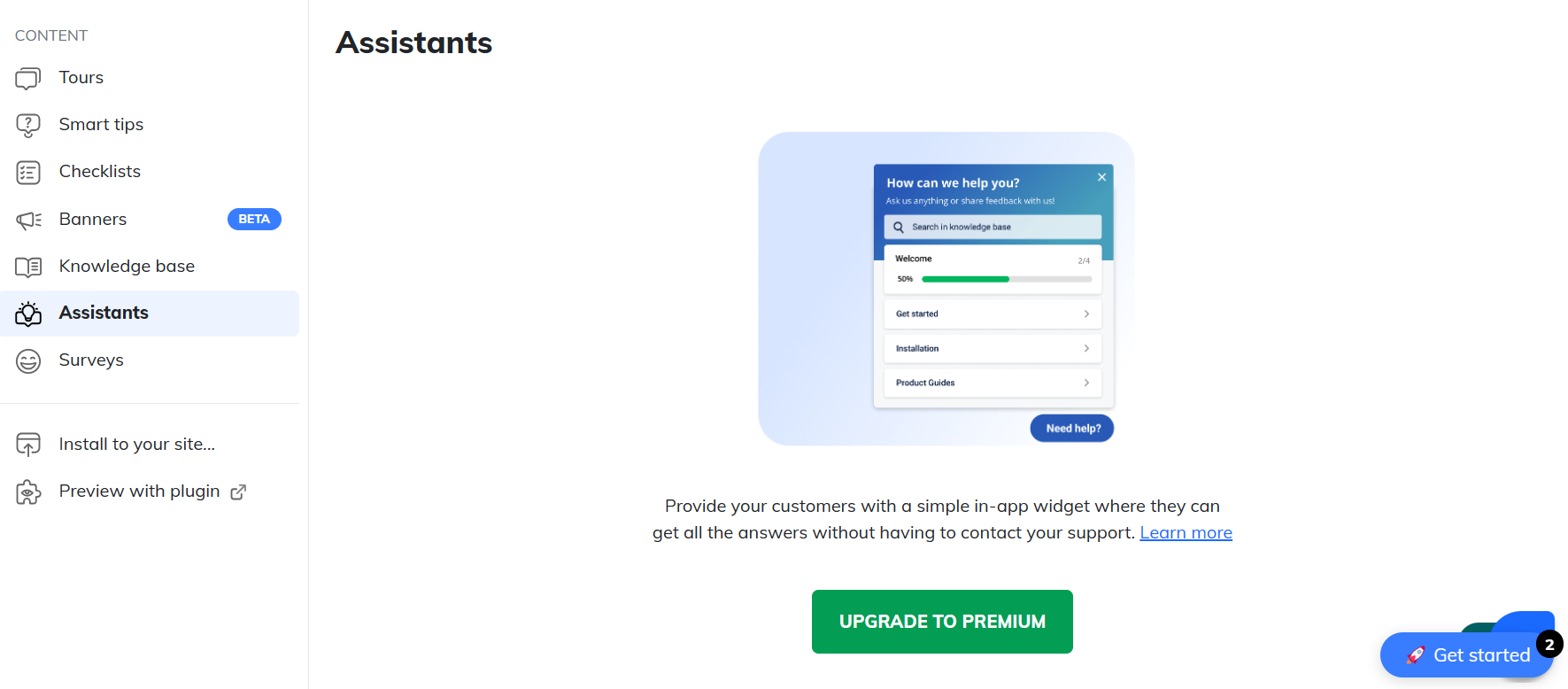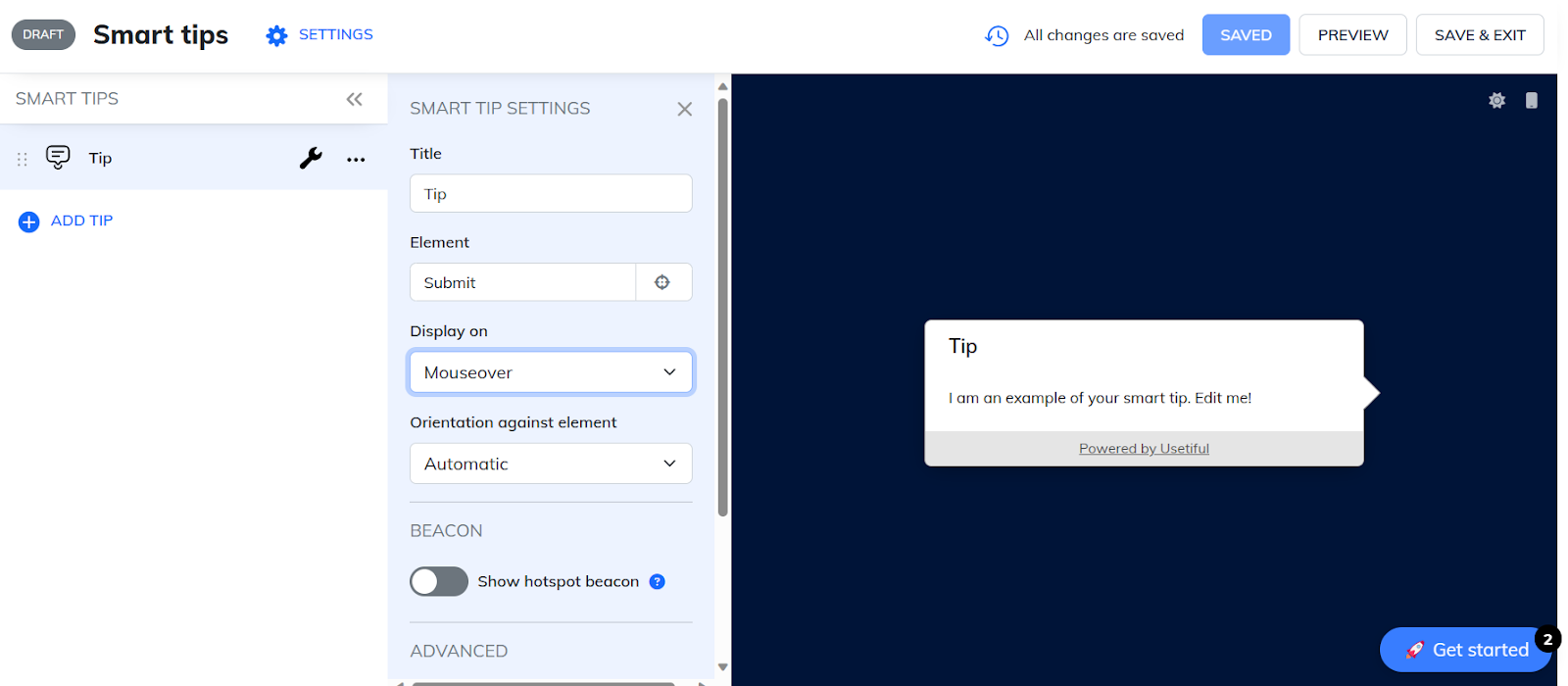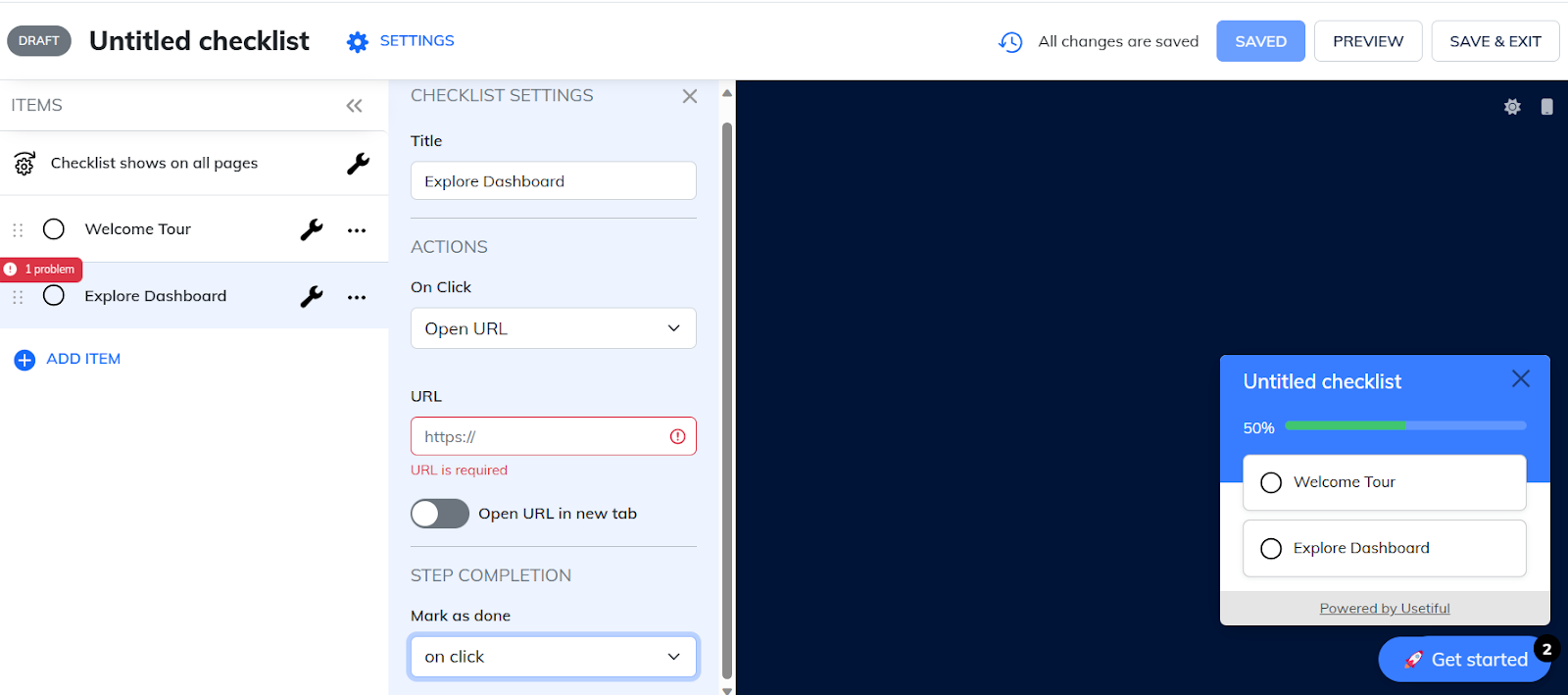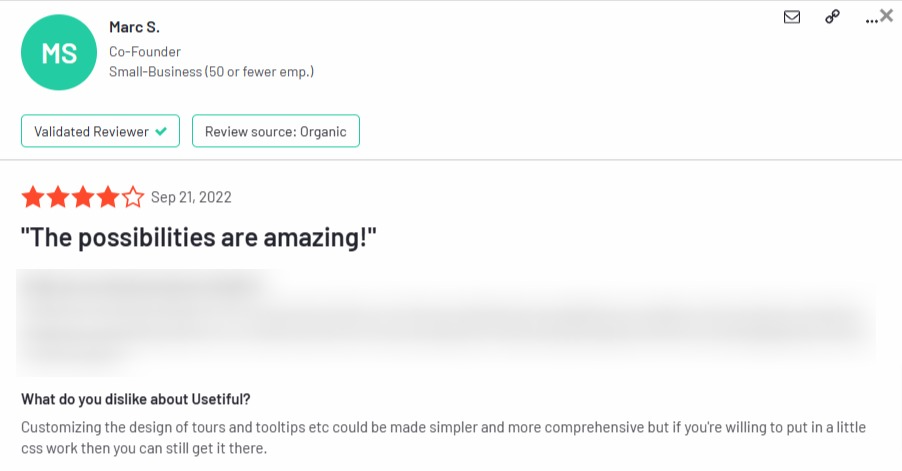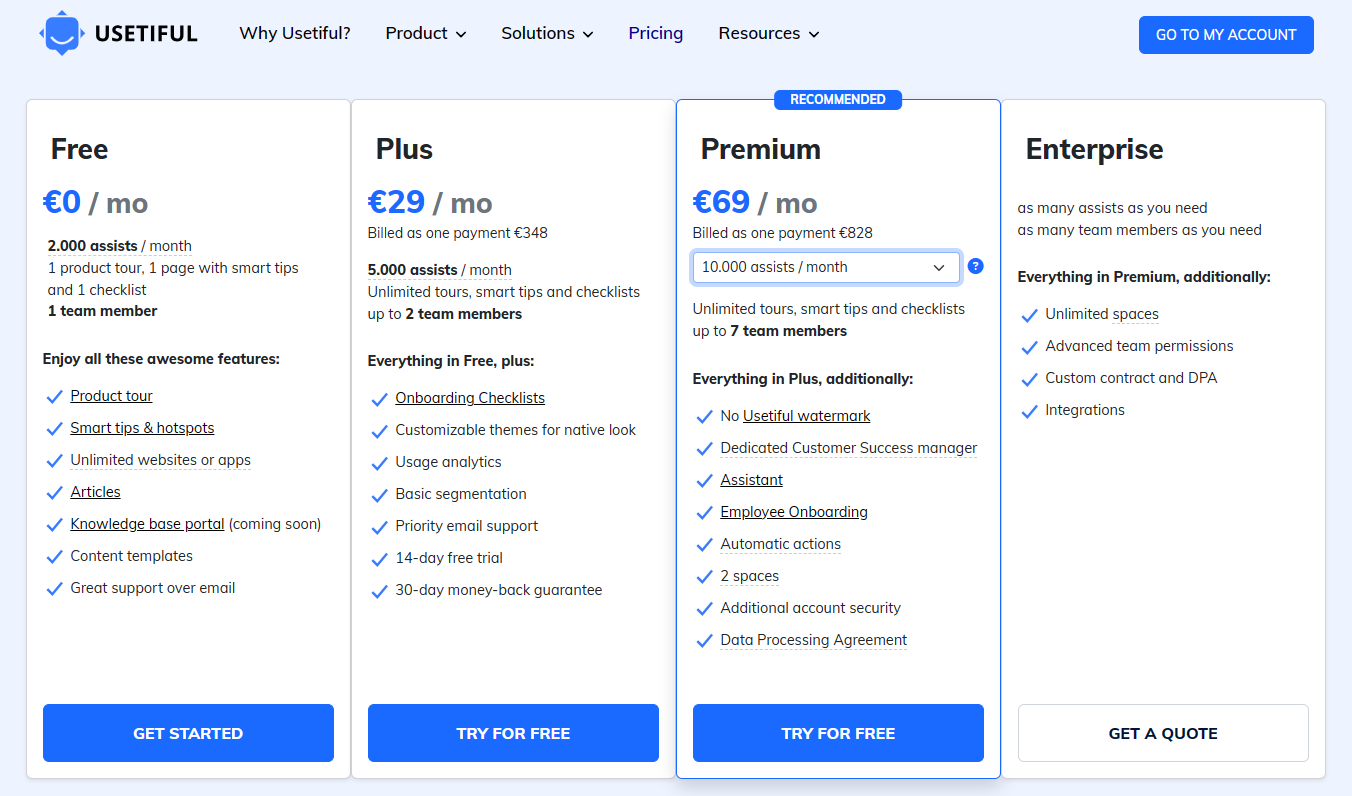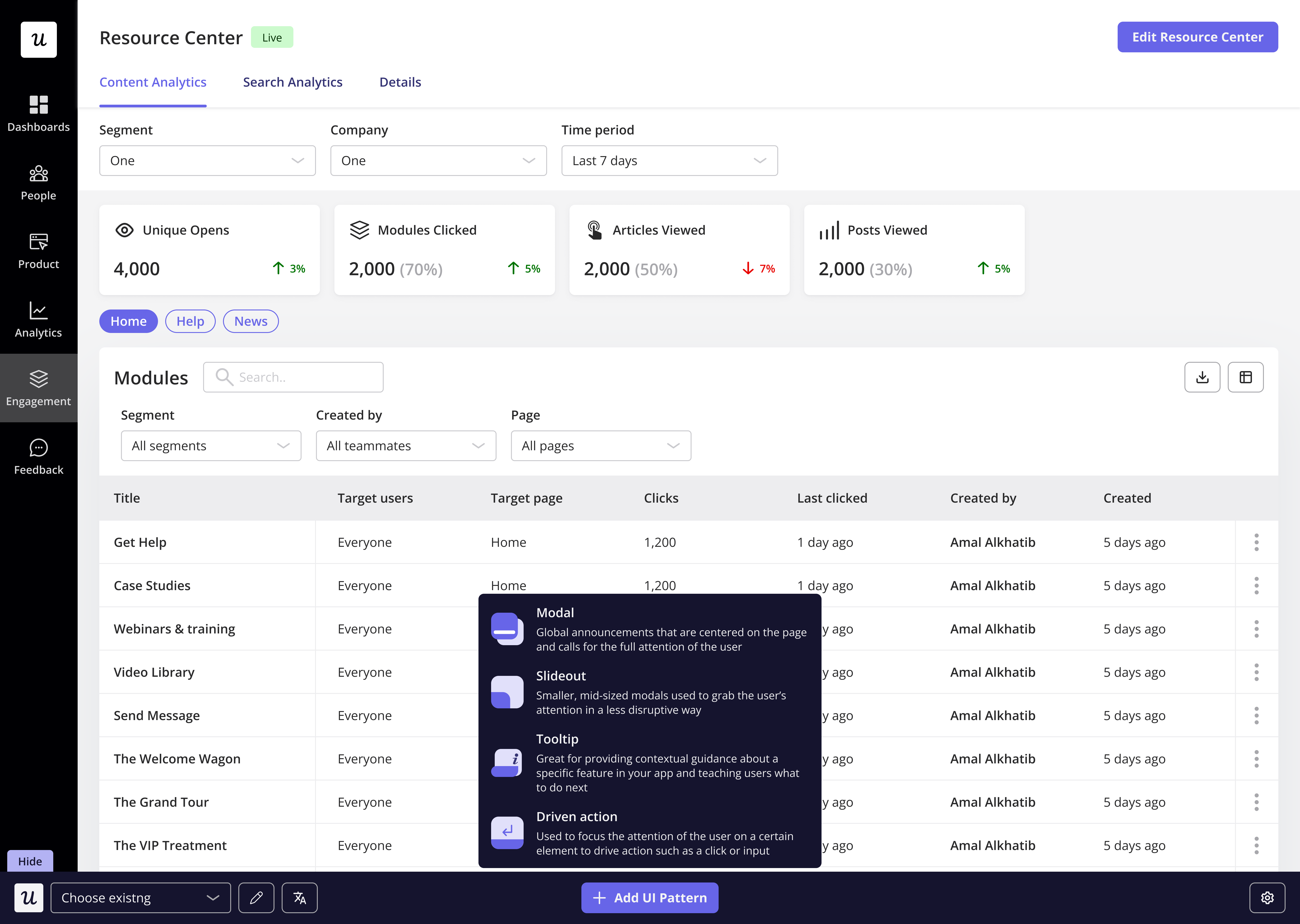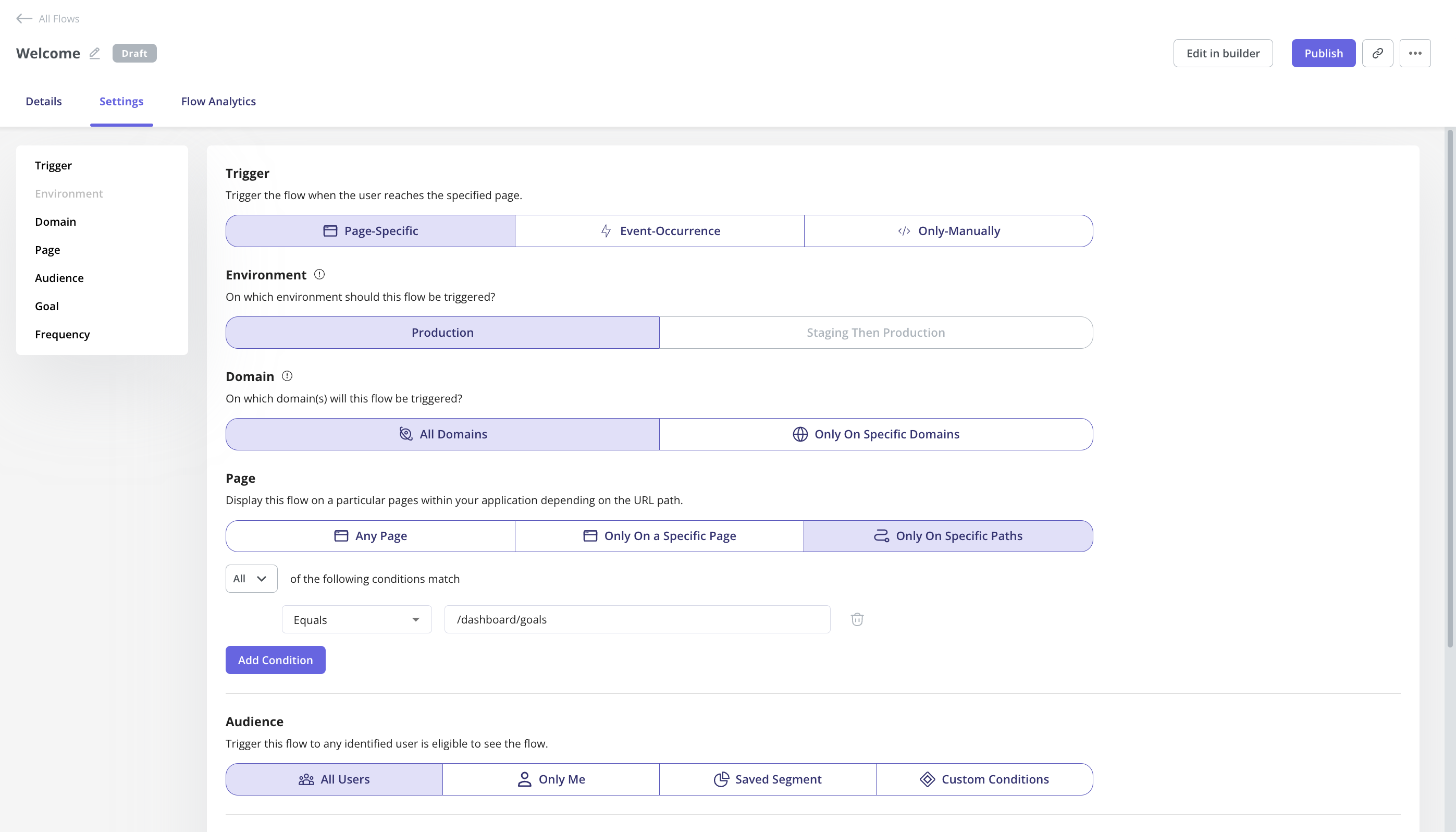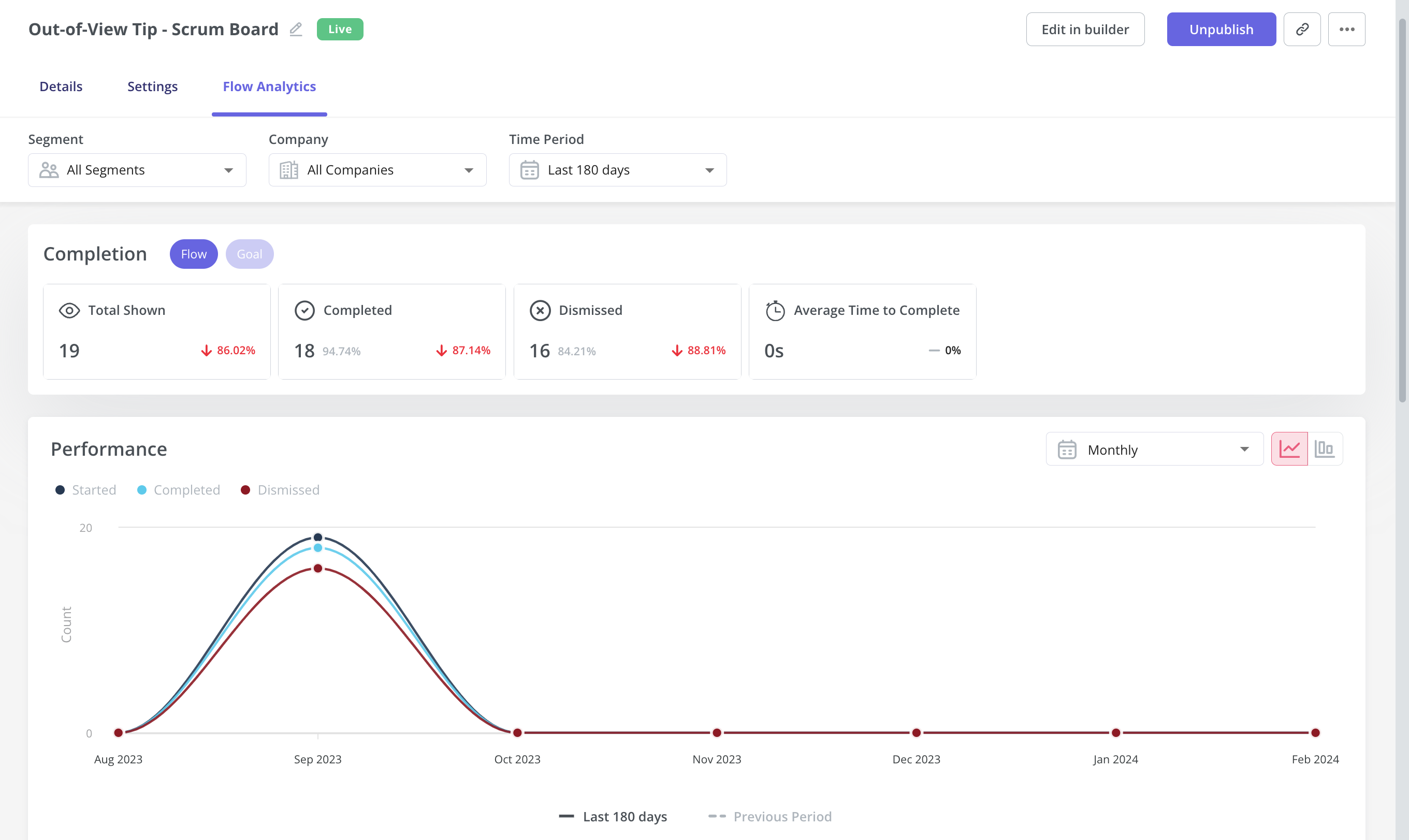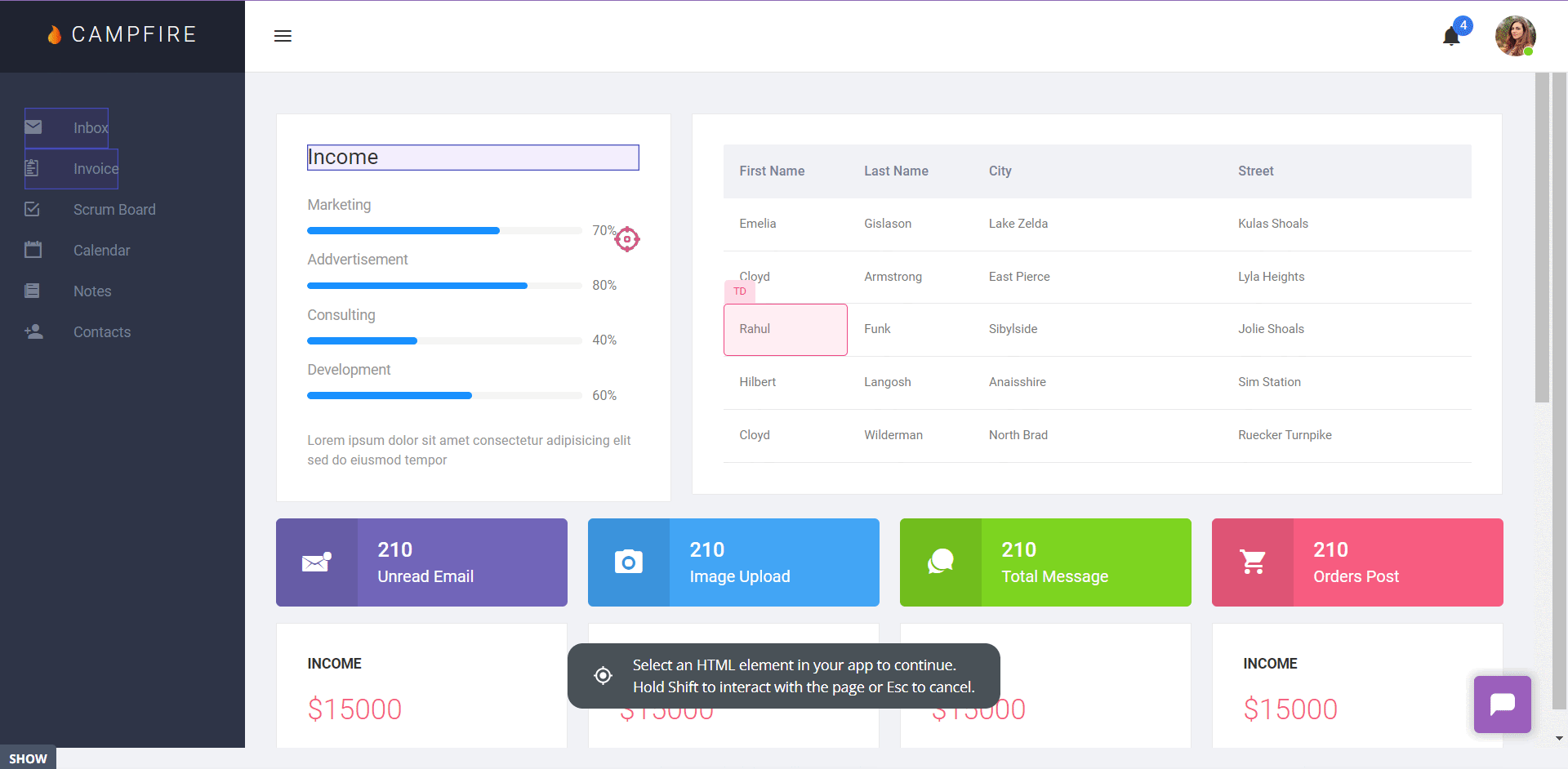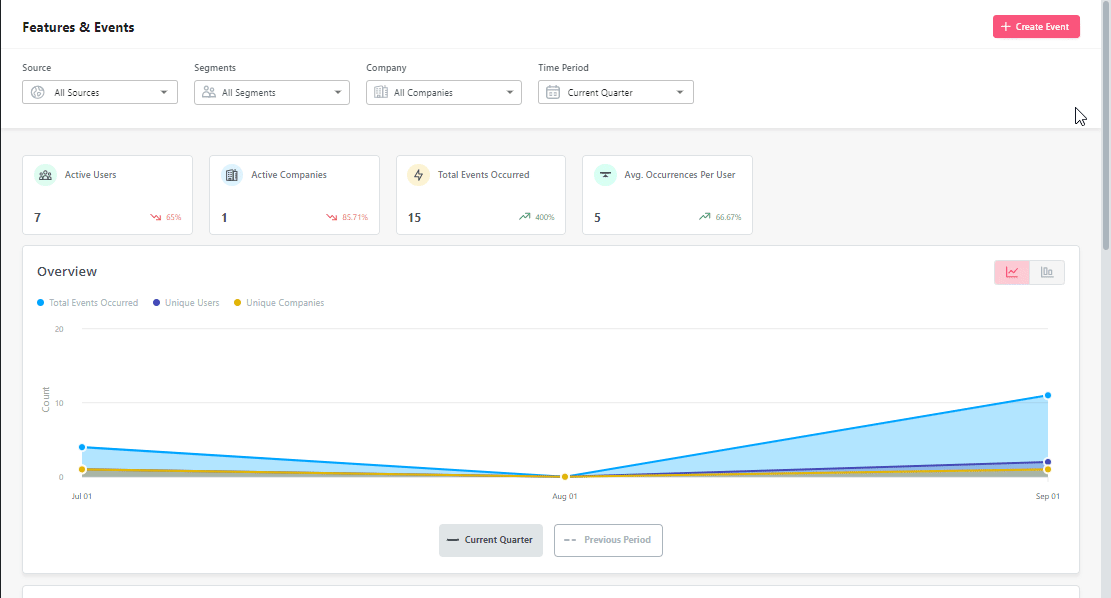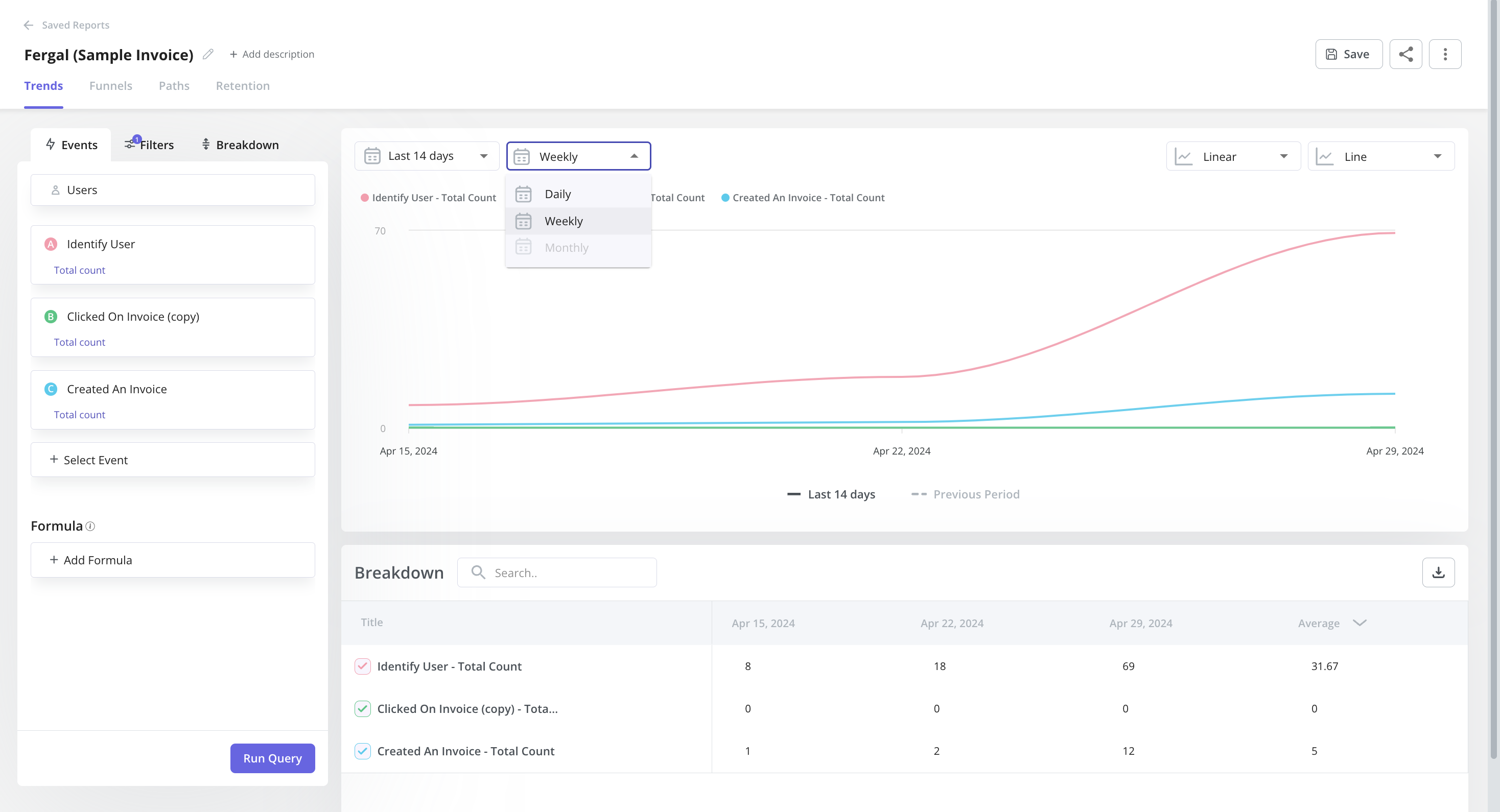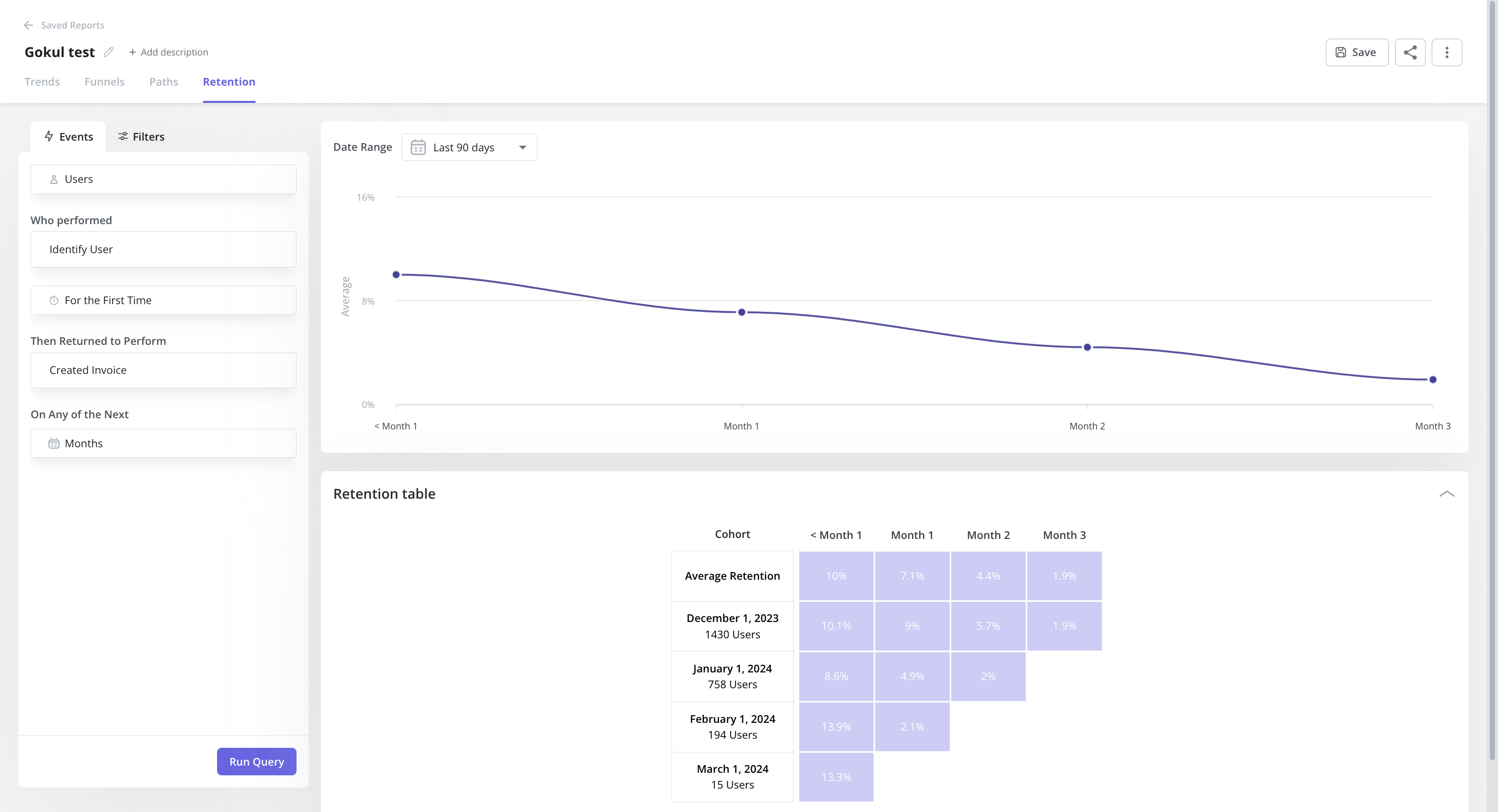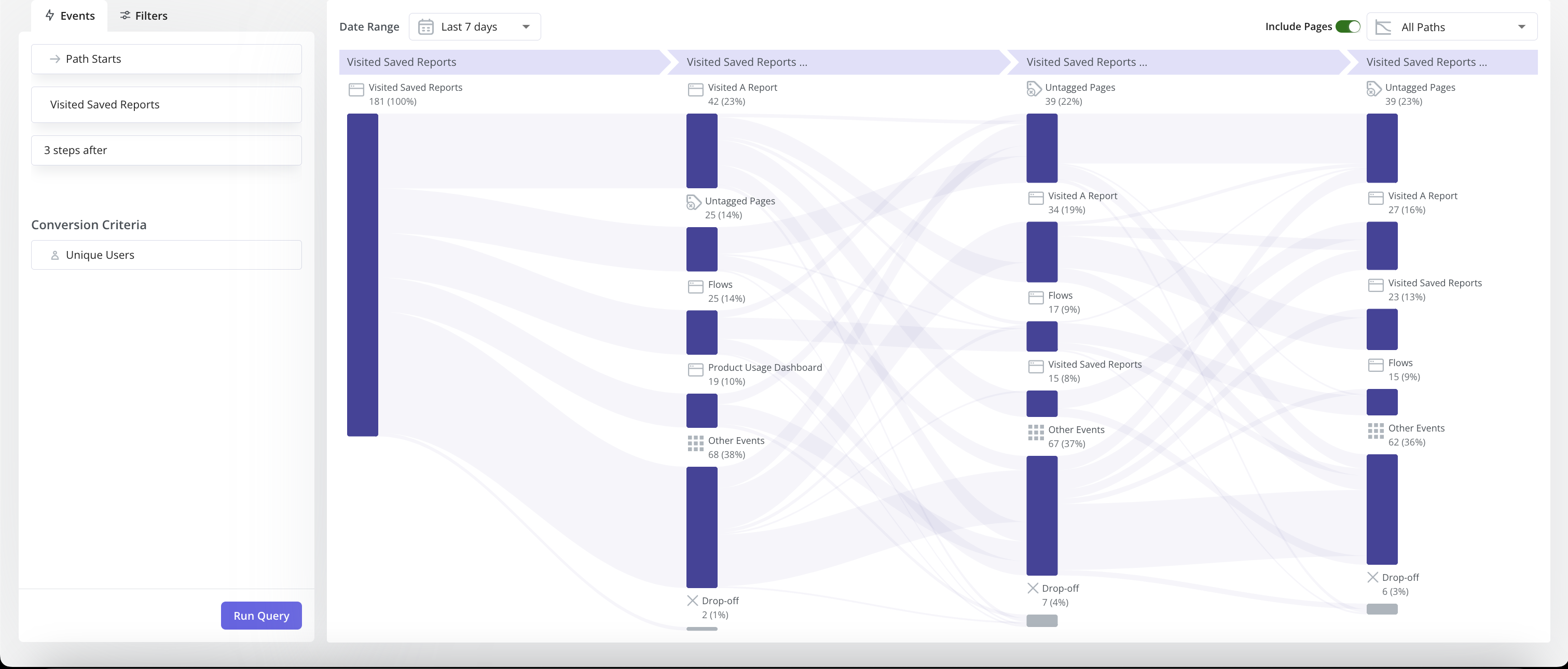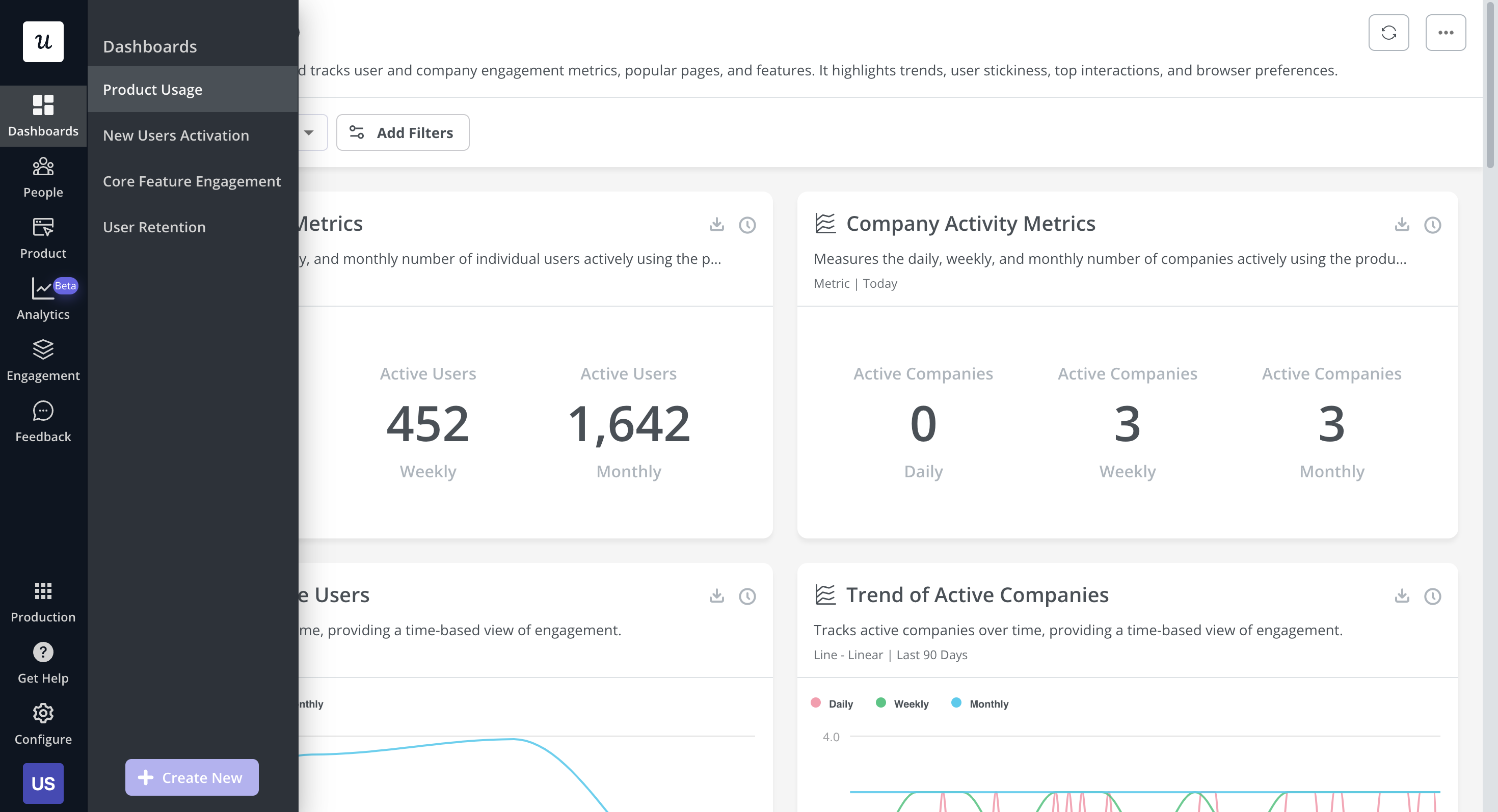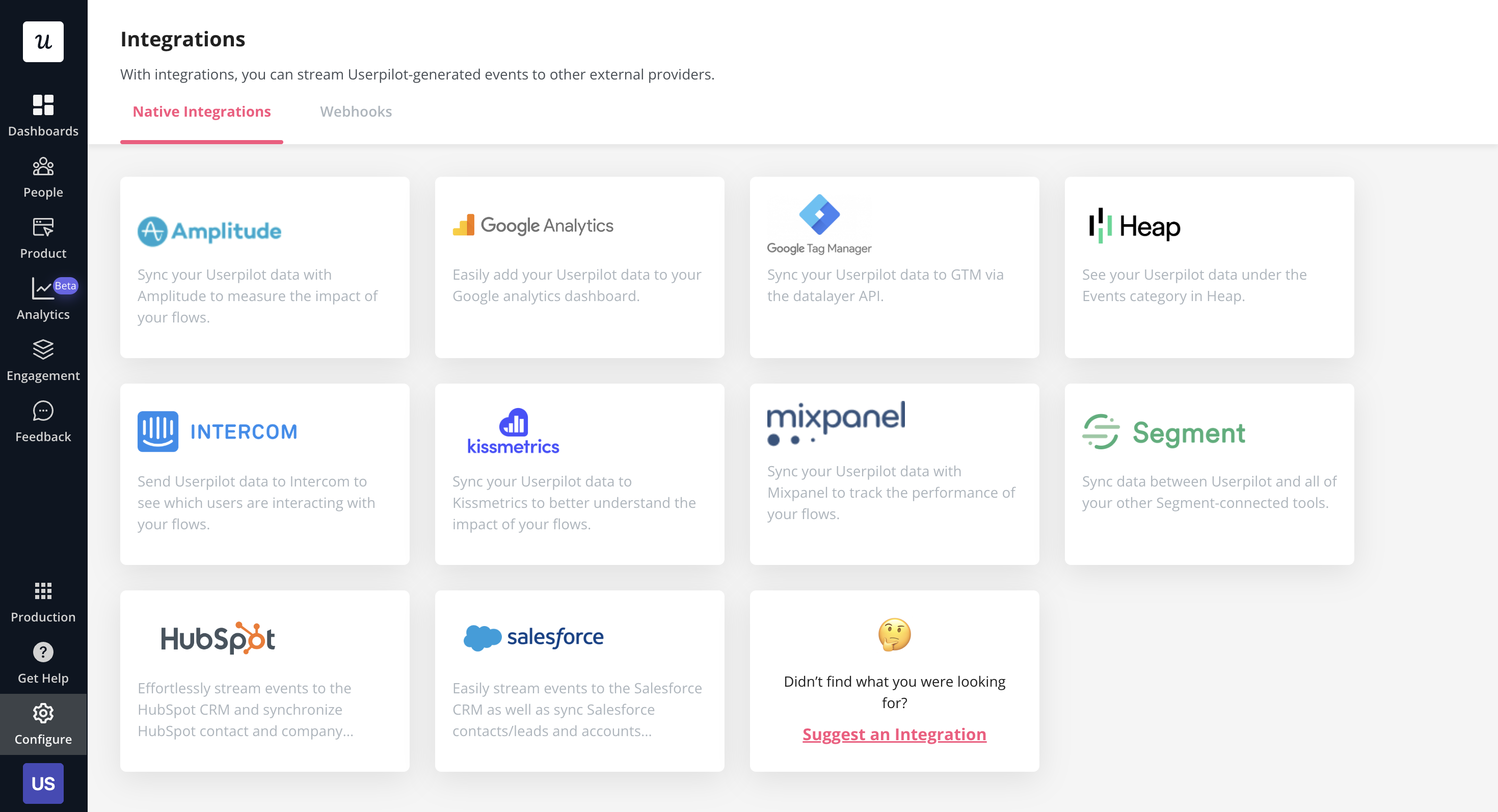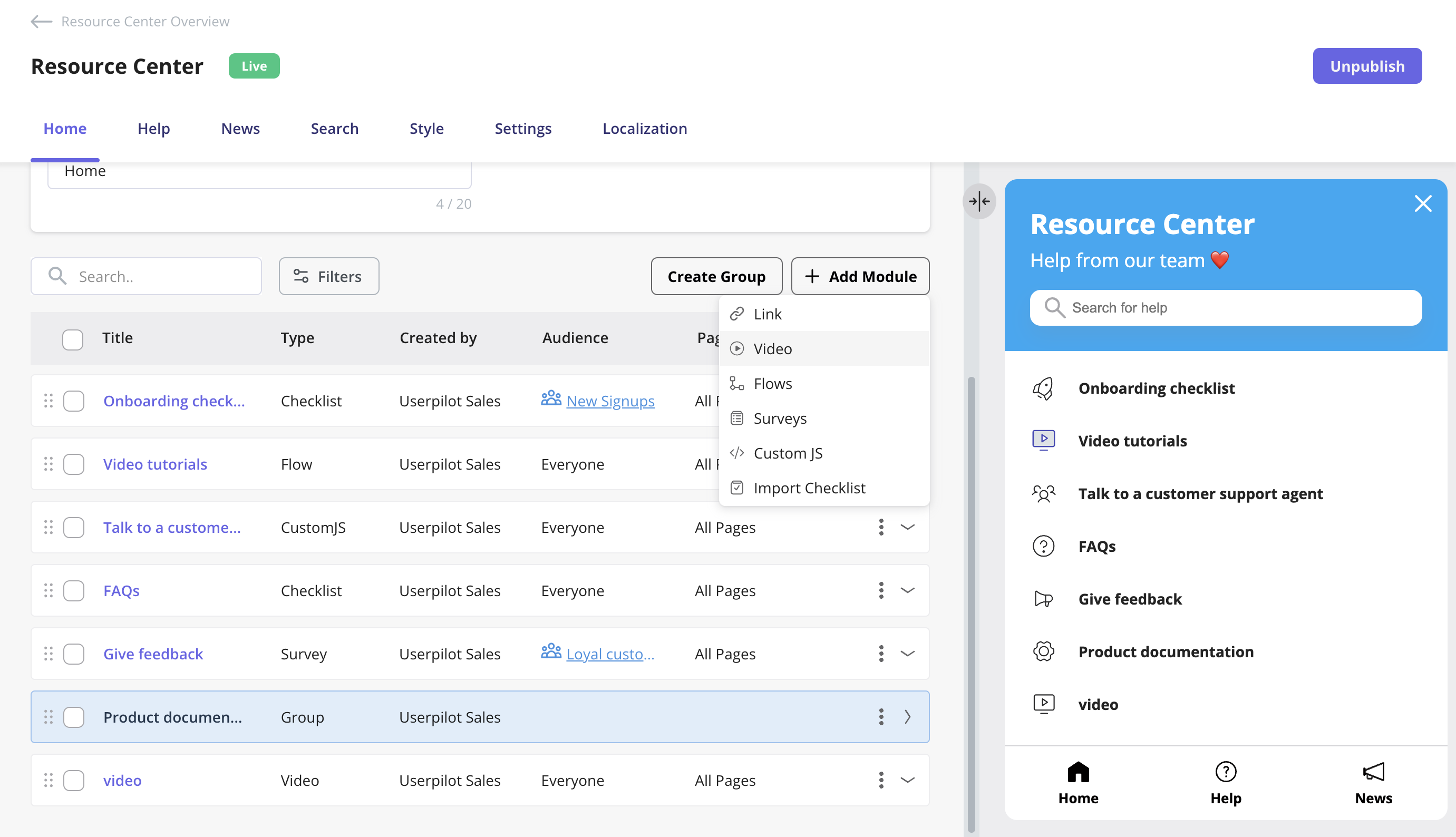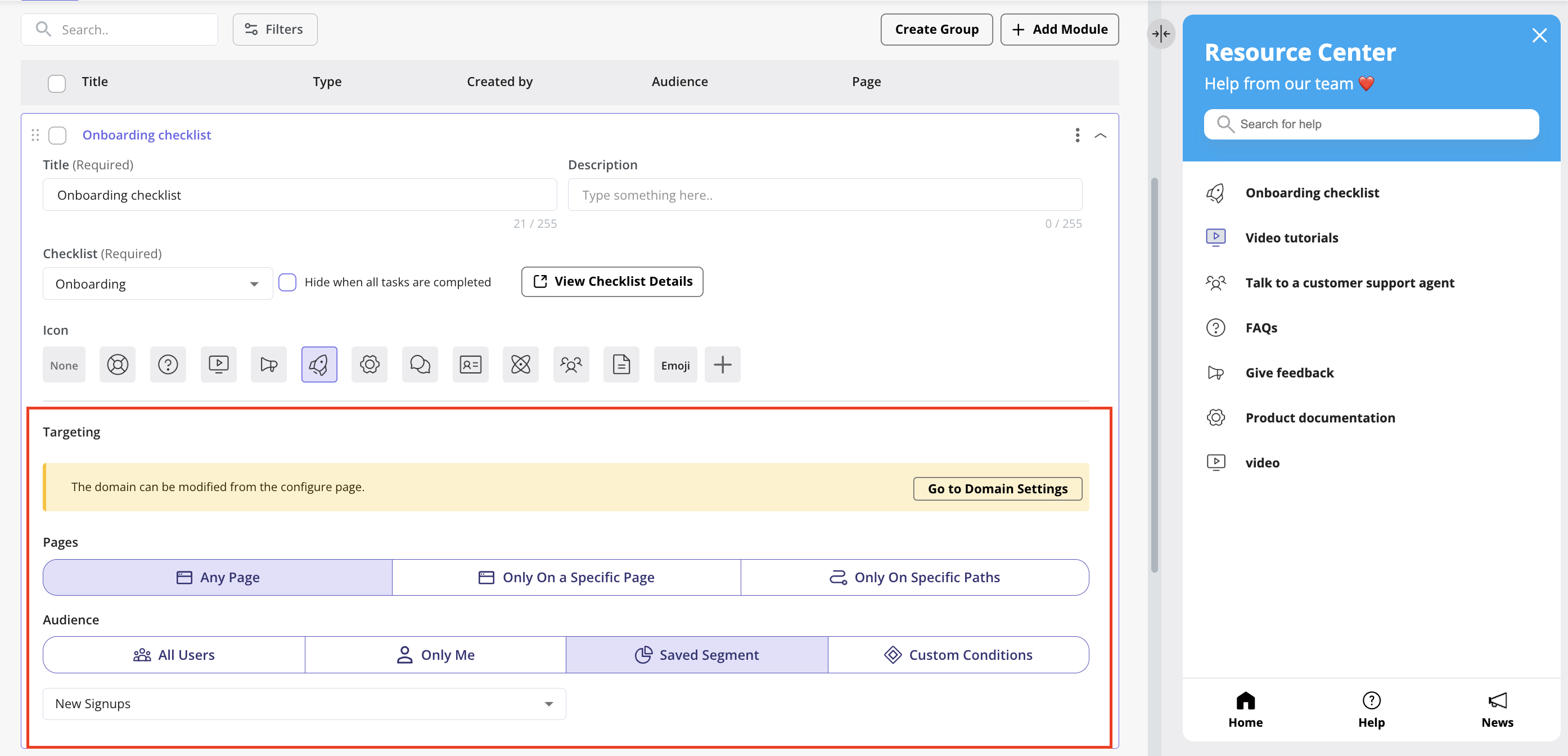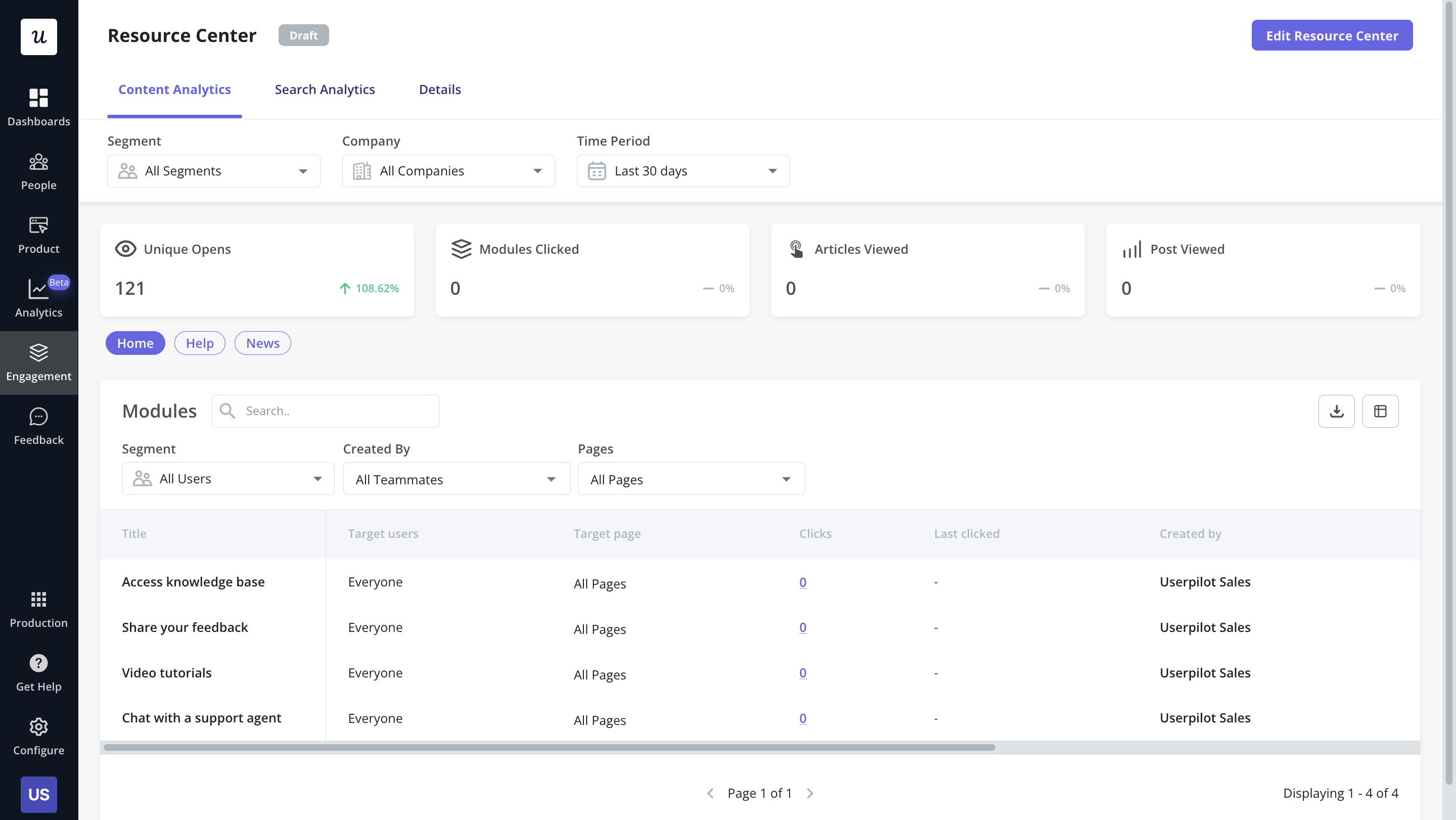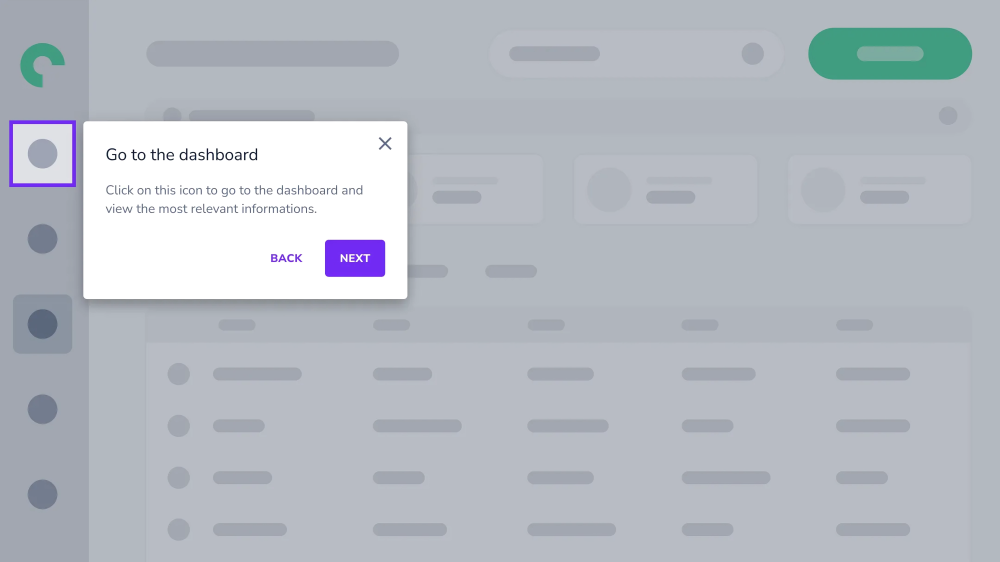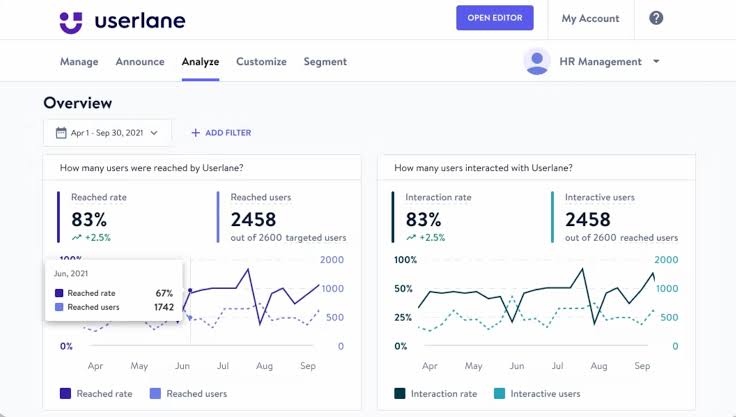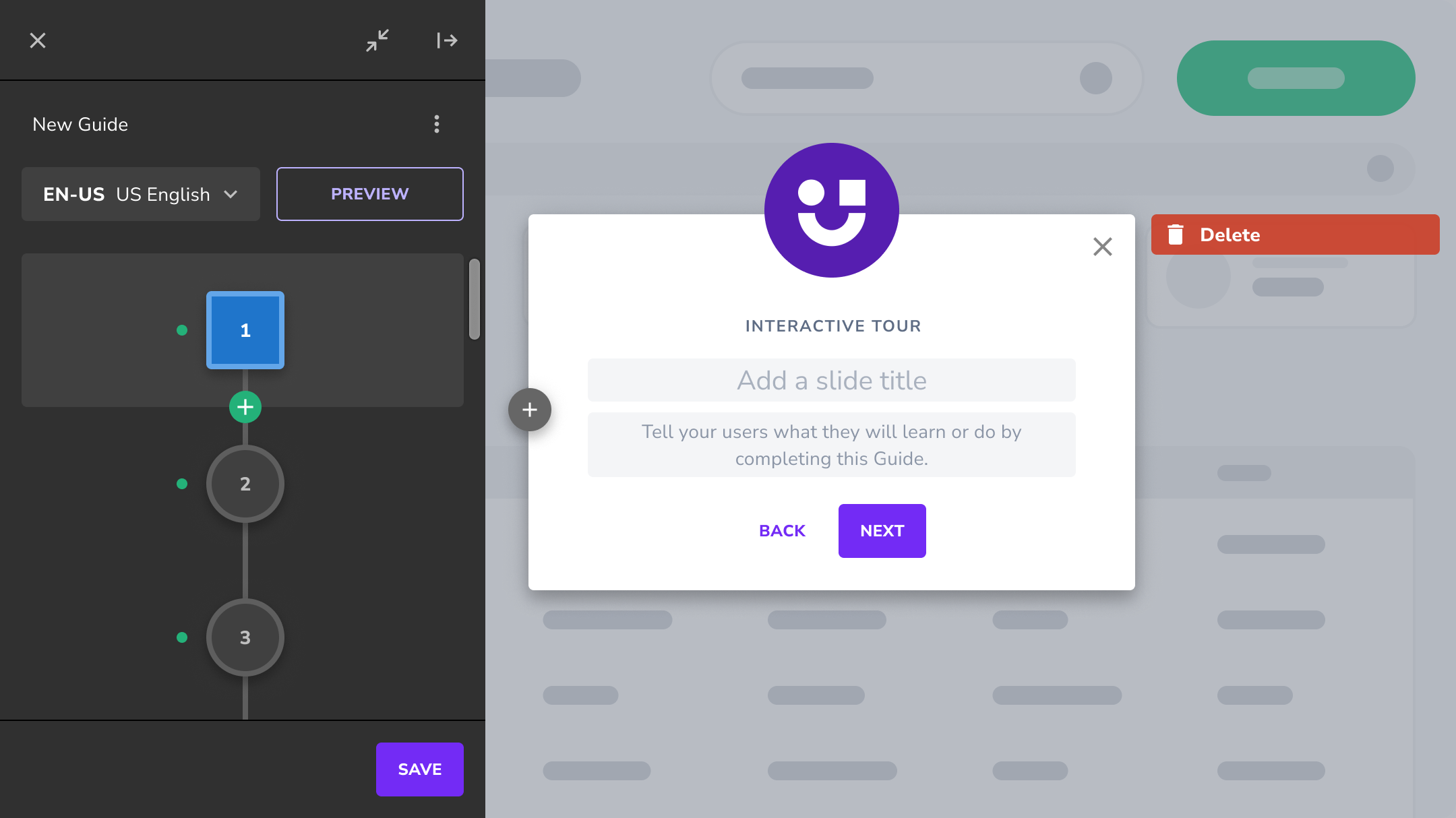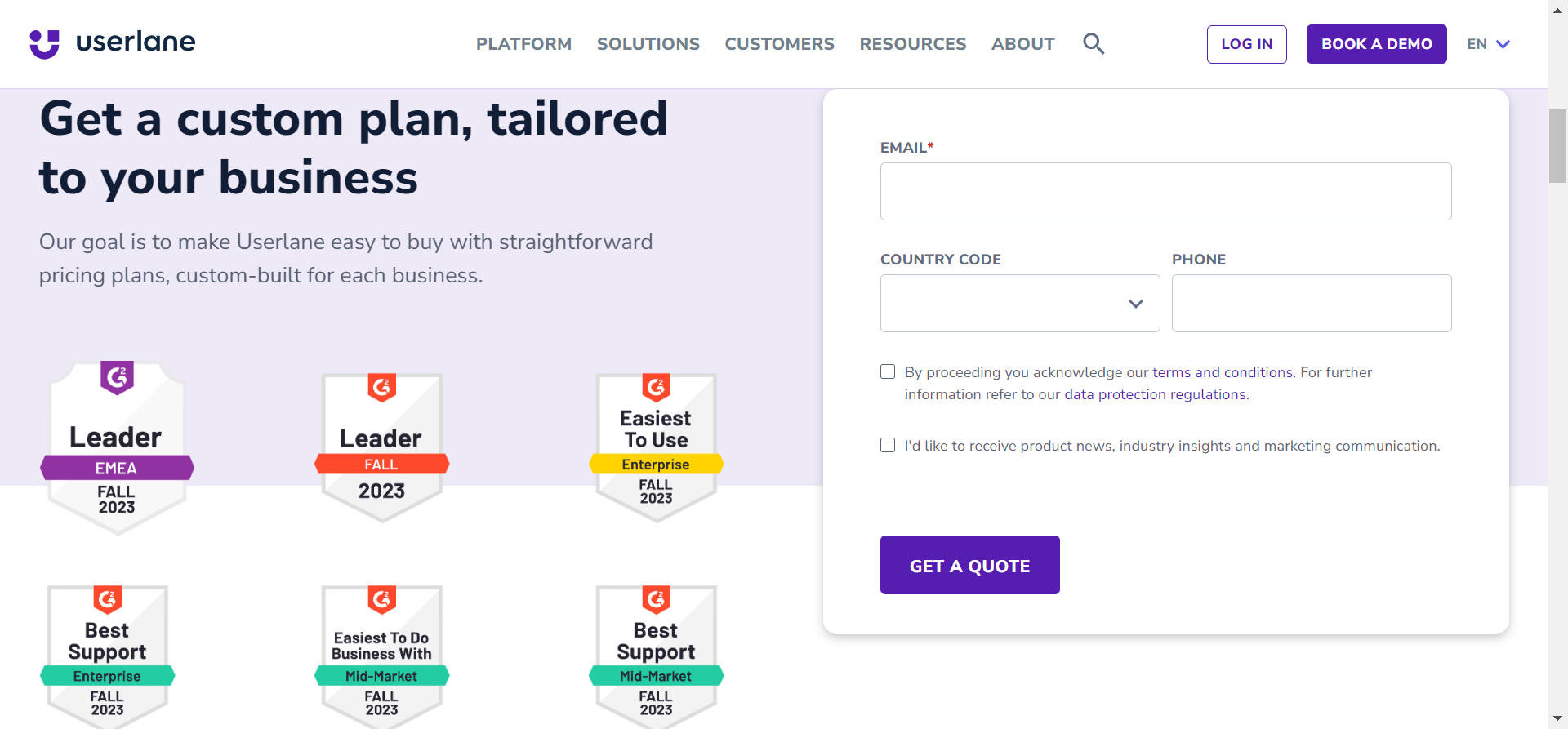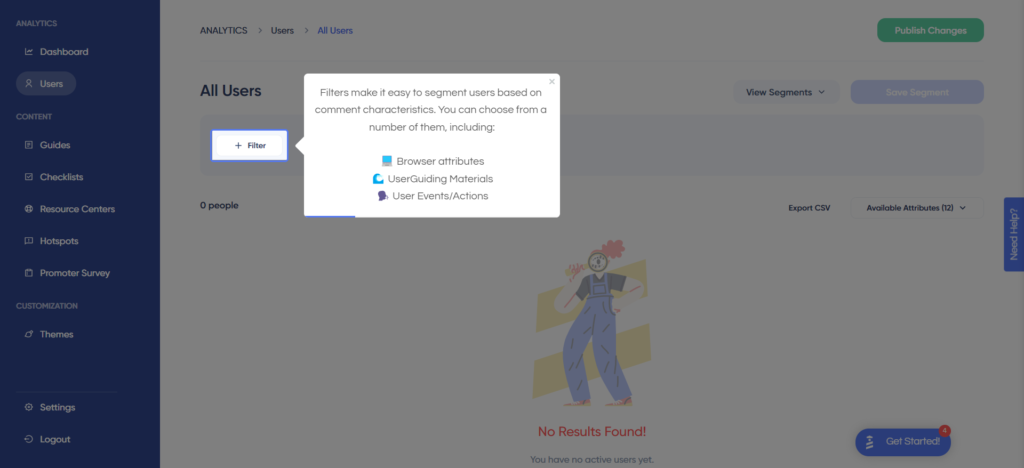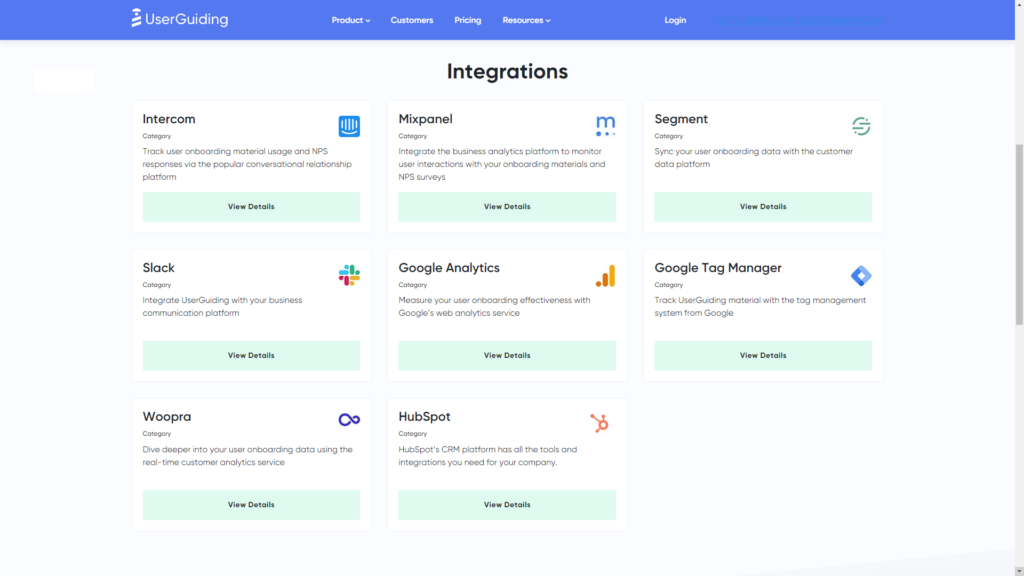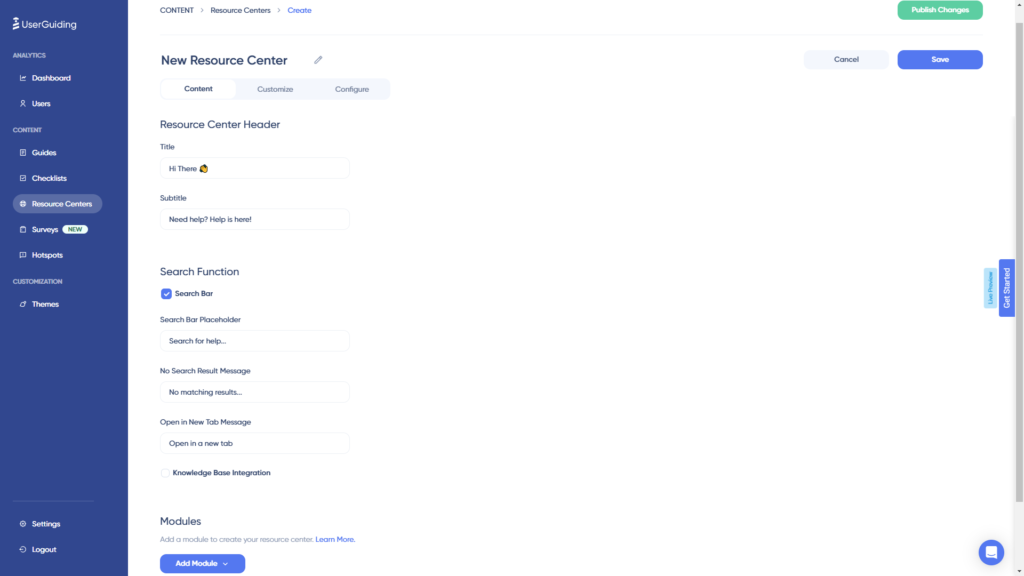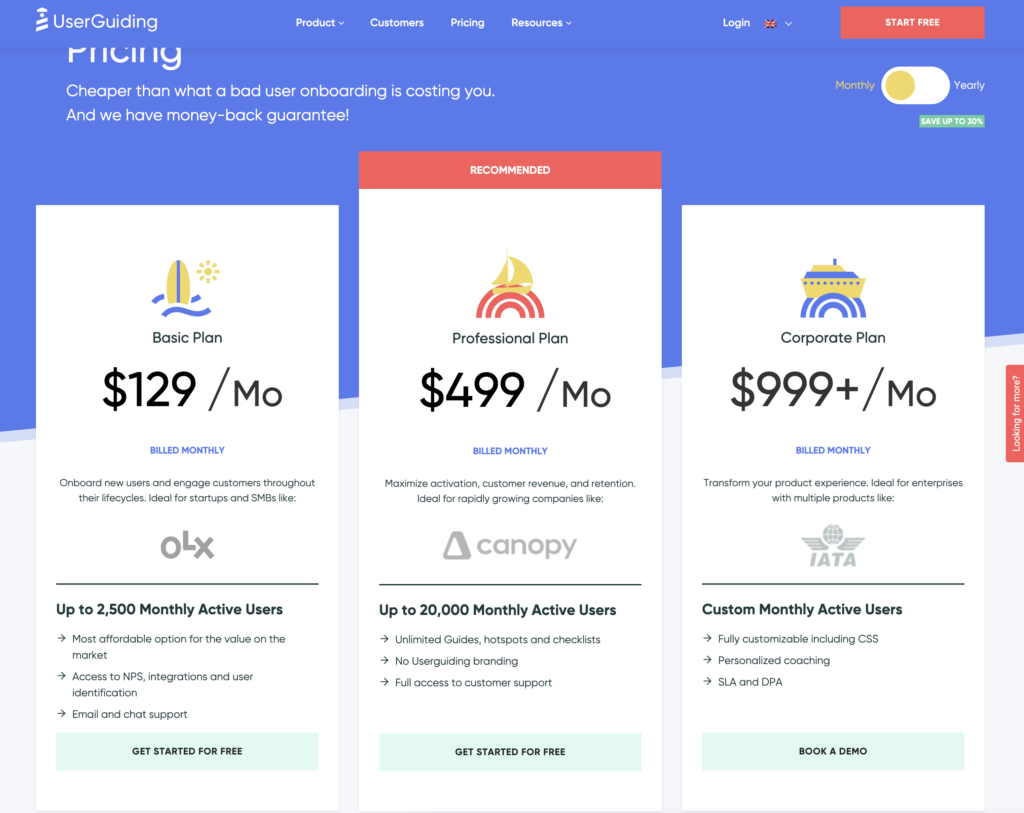
Exploring alternatives to Usetiful? With plenty of choices available, it’s difficult to decide which one will be the right fit.
The crux of the issue is – to make the right choice, you need to account for your priorities: your different jobs to be done, your budget, and the size of the company. But don’t worry – we’re coming to help!
In this post, we’ll discuss exactly that – which Usetiful competitor is best depending on the different use cases.
Let’s dive in!
Try Userpilot Now
See Why 1,000+ Teams Choose Userpilot

What is Usetiful?
Usetiful is a no-code digital adoption platform that lets you build a layer of in-app experiences on top of any product. You can use it to delight new users with a seamless onboarding experience and improved self-service support. You can also run in-app surveys and collect customer feedback. It works particularly well for single-page applications.
Usetiful offers a WYSIWYG editor that lets you create product tours, onboarding checklists, in-app announcements, and more. You can even build an in-app resource center. These features come in handy for marketing, product, and sales teams alike. Moreover, Usetiful works on third-party products, making it suitable for employee onboarding as well.
What are the main use cases for Usetiful?
Understanding the core functionalities and use cases of Usetiful is crucial for deciding whether or not it’s the right choice for you.
Without further ado, let’s see the primary scenarios where Usetiful is useful for your SaaS business!
Usetiful for user onboarding
An intuitive and frictionless user onboarding experience can go a long way to impress new users and win their loyalty. It can also help improve feature adoption and drive product growth.
Usetiful offers several features to help you level up your user onboarding process. These include:
- The Tours feature lets you design interactive product tours and walkthroughs to provide step-by-step guidance. It comes in handy for providing new users with an overview of your product. You can also use it to walk them through key features.
- You can build Tours using different UI elements, such as modals, sliders, and pointers. It’s also possible to add surveys to strategic points in a tour to collect feedback.
- The Smart Tips feature lets you create tooltips to provide users with always-available contextual guidance. You can use Smart Tips to help users navigate different on-page elements. Also, you can create a series of tips to minimize friction in the user experience.
- The Checklists feature lets you create helpful onboarding checklists. You can use it to guide new users through the setup process after signing up for your product. You can include various Tours or redirect users to specific pages. As a user completes each step, they can monitor their progress, and complete the onboarding journey.
- The Banners feature comes in handy for creating in-app notifications. You also have the option to create knowledge base articles and add them to the Knowledge Base Portal. Alternatively, you can set up the Assistants widget to create an in-app help center. It can eliminate points of friction in the user journey.
Usetiful for product analytics
Whether you’re looking to improve feature usage or maximize user retention, you must leverage product analytics. It helps you visualize and understand how different users engage with on-page elements and features.
When it comes to product analytics, Usetiful offers limited capabilities. The Reports feature lets you track the overall performance of in-app experiences created with Usetiful.
However, you don’t get advanced options, such as funnel tracking and user path analysis. Nor do you have the option to set up and track custom events. That makes it difficult to identify happy paths and features that drive stickiness. If you want a detailed look at how users move through your product and use different features, consider a tool like Userpilot.
Usetiful for self-service support
If you want to delight users with a frictionless user experience, offering self-service support is crucial. It gives them the confidence to explore your product and troubleshoot issues on their own. That, in turn, helps reduce the burden on your customer support executives.
Here’s how you can integrate self-service support into your product with Usetiful:
- You can use the Knowledge Base feature to create and publish articles that address common user queries. You also have the option of adding these articles to the Knowledge Base portal to make them readily accessible. It’s an easy way to build an in-app resource center.
- Next, you can set up an in-app help center using the Assistants widget. It lets users search for relevant knowledge base articles, product guides, and other resources. You can even recommend specific resources based on a user’s in-app activity. Additionally, users get the option to contact customer support directly from the widget. Keep in mind that this feature is only available in the Premium and Enterprise plans.
- You can also use the Smart Tips feature to add contextual, always-available tooltips to various on-page elements. It helps users understand what actions they’re supposed to take and troubleshoot common errors. It can be instrumental in minimizing friction.
- Additionally, the Checklists feature comes in handy for walking new users through your product. You can guide users to relevant product tours or ask them to check out specific knowledge base resources. It helps eliminate friction from the onboarding journey.
What are the pros and cons of Usetiful?
Pros of Usetiful?
As with any digital adoption platform, Usetiful offers a wide array of features to simplify user onboarding and boost product adoption. Its benefits include the following:
- Ease of use: Usetiful offers an intuitive and user-friendly interface that’s easy to navigate, even for users from non-technical backgrounds. Most features are accompanied by contextual tooltips, making it easy to get the hang of the platform. The no-code WYSIWYG builder simplifies things further for non-technical teams.
- Hassle-free implementation: Setting up Usetiful for your product is equally straightforward. All you have to do is add a Javascript code to your app. It requires minimal developer support.
- Works on third-party apps: Usetiful doesn’t just work on products you’ve built. You can also use it to create in-app experiences in third-party tools. In other words, it’s suitable for onboarding new users and employees alike.
- Chrome extension: Usetiful comes with a Chrome extension that sits on top of your product. It comes in handy for non-technical users who want to build flawless in-app experiences in a few clicks.
- Affordable pricing: With paid plans starting at €29 per month, Usetiful offers excellent value for money. It’s also one of the few digital adoption platforms with a forever-free plan. That makes it suitable for small teams with a limited budget. Plus, you have ample freedom to take it for a spin before investing in a paid plan.
Cons of Usetiful?
Despite its simplicity and affordability, Usetiful isn’t without flaws. As one of the newer digital adoption platforms in the market, it’s prone to performance issues. Other drawbacks include:
- Limited customizability: Customization options on Usetiful are limited to fonts and colors. Advanced customization is only available through CSS classes, which isn’t always feasible for non-technical users. If your product already has an established brand identity, the lack of customization capabilities might leave you disappointed.
- Lack of built-in integrations: Usetiful supports integration with a handful of third-party tools, such as Survio and Tradly, and HubSpot integration is currently in the works. The lack of third-party integrations restricts the platform’s utility for advanced user analytics and segmentation. You can use webhooks to connect to other apps, but it can be cumbersome when you already have an extensive tech stack.
- Doesn’t work for mobile apps: While Usetiful works for your own and third-party tools, you can only use it on web-based apps. The software doesn’t work on mobile devices (or apps).
- Basic analytics: When it comes to user behavior and product analytics, Usetiful leaves a lot to be desired. The analytics feature provides an overview of the number of users who start and complete an in-app experience. But beyond that, you don’t get in-depth insights into how users navigate your product and interact with different on-screen elements (like Userpilot does).
- Limited in-built survey templates: While Usetiful lets you create in-app surveys, your options are restricted to a small selection of survey templates. Also, you can’t analyze survey responses in detail or trigger in-app experiences based on them.
What do users say about Usetiful?
With a rating of 4.6 stars (out of 5) on G2 and 4.7 stars (out of 5) on Capterra, Usetiful boasts generally positive reviews. Most users appreciate the platform’s user-friendliness and prompt customer support.
Here’s what a happy user had to say:
“Usetifull is a tool that has revolutionized efficiency and user experience on our platform.”
What I found most useful about the platform is the way it facilitates the creation of user onboarding experiences and product tours, which today is essential to improve efficiency and user experience across a variety of platforms.
– Marcus C. (Small Business)

Here’s what a user had to say:
“The possibilities are amazing!”
Customizing the design of tours and tooltips etc could be made simpler and more comprehensive but if you’re willing to put in a little css work then you can still get it there.
– Mark S. (Co-founder, Small Business)
Does Usetiful fit your budget?
Usetiful’s pricing is transparent and easy to understand, with four different plans. These include:
- Free: You can create one product tour, one checklist, and multiple smart tips across one page.
- Plus: You can build unlimited product tours, checklists, and smart tips and customize their look and feel. You also get access to basic segmentation features and user analytics. Pricing starts at €29 per month and allows up to 2 team members.
- Premium: You can create in-app experiences without the Usetiful watermark and use the Assistants widget for self-service support. You also get access to advanced segmentation features and employee onboarding tools. Pricing starts at €69 per month and allows up to 7 team members.
- Enterprise: You can use Usetiful on multiple products and environments and get access to more extensive integrations. Pricing is available on request and depends on your specific requirements.
All paid plans come with a 14-day free trial and a 30-day money-back guarantee. But you’ll need to enter your credit card details to start the free trial. Additionally, all plans support as many websites or apps as you want.
With plans starting at €29 per month, Usetiful is among the most affordable digital adoption platforms. That makes it a good fit for startups and small businesses with limited budgets.
3 Reasons why you might need a Usetiful alternative
If you’re looking for a user-friendly tool to improve user onboarding and product adoption, Usetiful ticks all the boxes. But it may not be the right fit for everyone. You’ll likely need to look for a Usetiful alternative in the following scenarios:
- You want complete control over the look and feel of in-app experiences: Usetiful’s default customization options are limited to font and color. If you want modals, in-app notifications, tooltips, and other elements to seamlessly blend with your product’s branding, Usetiful may not fit the bill.
- You want to collect detailed user feedback: Usetiful offers a small selection of survey templates, such as NPS surveys and reactions. If you’re looking to gain insight into customer satisfaction and user sentiment, it’s wiser to consider an alternative.
- You want to track user behavior and engagement: Usetiful’s basic analytics capabilities make it unsuitable for teams that want to dig deeper into user behavior data. You can’t use it to make strategic decisions regarding product development and marketing.
Better alternatives to Usetiful
Considering alternative options to Usetiful can often lead to discovering more tailored solutions that better suit your needs. Here are the top Usetiful alternatives you can consider:
- Userpilot is a product growth platform that drives user activation, feature adoption, and expansion revenue. It also helps product teams collect user feedback, streamline onboarding, and gather actionable insights from analytics. With Userpilot, you’ll be able to track both product usage and user behavior to get a holistic view of how customers use your product — which will guide future development, improve the user experience, and inform your growth efforts.
- Userlane is a no-code digital adoption platform used to measure how employees use applications, identify areas for improvement, and offer real-time guidance directly within any application. In addition, it allows you to get a real-time view of digital transformation progress in your organization. You can now delve deeper into user behaviors across different applications and analyze engagement levels so you can optimize user experiences.
- Whatfix is a digital adoption platform that helps enterprise organizations with onboarding, training, and supporting their employees or customers. It accomplishes this through in-app guidance and messaging to provide on-demand support whenever it’s needed. The solution also lets you track analytics on all in-app guidance, collect user feedback, build out self-serve content, and automate certain flows. Whatfix even has integrations with Salesforce, Amplitude, Google Analytics, Slack, Confluence, and other platforms to maximize collaboration.
- UserGuiding is a no-code product adoption tool that lets users create in-app walkthroughs, guides, and checklists. The solution makes it possible for teams to onboard, engage, and retain users without needing coding skills to create these in-app experiences. All in all, UserGuiding is a pretty flexible solution that can improve the onboarding process, boost user engagement, and increase customer retention.
Let’s see the features and functionalities of these tools for different use cases!
Usetiful vs Userpilot
There are many ways Userpilot is different (and in a lot of ways better!) from Usetiful. Let’s explore the features of Userpilot, how it’s better than Usetiful, and how it may fall short too.
Userpilot for user onboarding
User onboarding is a crucial part of the customer journey as it speeds up the adoption process and increases retention rates. Onboarding is one of Userpilot’s core use cases along with product growth analytics and user feedback, so it has plenty of features that you can utilize.
Here are some Userpilot features you can use when onboarding new users:
- No-code builder: Creating flows with Userpilot is as simple as installing the Chrome extension, selecting the UI patterns you’d like to use, and then editing the content/settings to suit your use case. You can also use templates to create modals, slideouts, tooltips, and driven actions.
No-code flow builder in Userpilot. - Native tooltips: Userpilot lets you create native tooltips that show up when users hover over an element or click on an information badge. Since these native tooltips attach to the element itself, they aren’t page-dependent and will show up on any screen where that element is visible.
Build native tooltips with Userpilot. - Advanced flow settings: With advanced condition settings, you can decide when, where, and who you’ll be triggering your onboarding flows. This helps you create contextual and personalized onboarding experiences that drive engagement and adoption.
- Onboarding engagement analytics: You can easily assess the impact of your onboarding flows, guidance, etc. by analyzing the engagement rate of tooltips, interactive walkthroughs, checklists, etc. In addition, you can also build reports (funnels, paths, etc.) or dashboards to track your core onboarding metrics i.e. activation, stickiness, drop-offs, etc.
Userpilot for product analytics
Product analytics lets you collect and analyze data about how users interact with your product so you can extract actionable insights. Userpilot lets you look at granular product analytics, such as which features have the highest adoption rates, and big-picture insights like trend reports. Here are Userpilot’s top product analytics features:
- Feature tagging: Userpilot’s click-to-track feature tagger lets you view how many times a feature has been used and by how many users to measure its adoption. Users on the Starter plan can add up to 10 feature tags while those on the Growth or Enterprise tier can create unlimited tags.
No-code feature tags in Userpilot. - Event-tracking: Alongside no-code feature tags for feature engagement tracking, you can also track other events unique to your product using event-tracking. You can also create a group of events to track a specific process i.e. onboarding, subscription, etc.
Create tracked events to monitor server-side data. - Trends and funnels: Userpilot’s trends and funnels report lets you extract actionable insights from big data. You’ll be able to see which stage of an onboarding/conversion funnel most users drop out on and create trend reports with detailed breakdowns by user or period.
Example of a trend report in Userpilot. - Retention tables: This lets you gauge product performance – how effective it is at retaining users using cohort tables and retention curves.
- Paths: You can generate and access path reports directly within the reporting builder in Userpilot, alongside funnels, trends, and retention reports. With Paths, you can have an overview of how users navigate your product features – offering invaluable insights into their interactions with your products.
- User & Company profiles: Here you can view data related to a certain user/company to gain insights into their behavior and improve the overall user tracking experience. This helps you understand how they engage with your product or platform, better identification of areas of improvement, and tailor their offerings more effectively.
User profile with top event data that provides insights into what feature they regularly engage with. - Analytics dashboards (Product Usage, New Users Activation, Core Feature Engagement, User Retention, etc.): These dashboards enable you to keep track of your key product performance and user behavior metrics at a glance, without any technical setup required.
- Analytics integrations: Userpilot integrates with some of the most popular analytics tools like Amplitude, Mixpanel, Segment, Google Analytics, and more. This makes it possible to sync product analytics both ways between the tools in your tech stack (two-way integration is only available for Hubspot at the time of writing, more to come).
Userpilot for self-service support
Here’s how you can use Userpilot to create a self-service customer experience:
- No-code builder: Userpilot’s no-code resource center lets you add modules without writing a single line of code. Module options include links, videos, flows, custom JavaScript functions, and checklists. You can also group modules into sections to help users navigate the resource center.
Add different types of content to your resource center. - Module segmentation: Userpilot’s segmentation settings let you hide or show specific modules within your resource center based on audience settings. This makes it possible to create modules for different user segments and hide resources that aren’t relevant to other users.
Help module visibility condition settings. - Resource center analytics dashboard: The dedicated analytics dashboard helps you see how many unique visitors your resource center gets, how many modules have been clicked, the overall click rate across your user base, and popular search terms. This will make it easier to gauge resource center performance and identify if anything is missing from your resource center.
Resource center content analytics in Userpilot.
Pricing of Userpilot
Userpilot offers flexible pricing based on your monthly active users (MAUs). Plans start at $299 per month for smaller teams and scale as your user base grows.
Below are the pricing tiers you can choose from:
- The Starter plan begins at $299/month (billed annually) for up to 2,000 monthly active users. It includes in-app user engagement, usage trend analysis, NPS surveys, and essential product analytics—ideal for mid-market SaaS teams getting started.
- The Growth plan offers custom pricing and adds advanced analytics, retroactive event auto-capture, in-app surveys, session replay, and more. It’s the most popular choice for growing teams that need deeper insights and scale.
- The Enterprise plan offers custom pricing and includes everything in Growth, plus bulk data handling, custom roles and permissions, SOC 2 Type 2 compliance, and enterprise-level support.

Usetiful vs Userlane
There are many ways how Userlane is different (and in a lot of ways better!) from Usetiful. Let’s explore the features of Userlane, how it’s better than Usetiful, and how it may fall short too.
Userlane for user onboarding
Teams use Userlane to ditch the stress of manual onboarding. The platform allows you to build a customized and interactive onboarding dashboard for each software, promoting an easy software onboarding experience every time.
Here are some ways Userlane helps with onboarding:
- Digital adoption solution: Userlane has a digital adoption solution that provides on-screen, step-by-step guidance to your users. This way, users can navigate your software with ease. You can also create an interactive in-app guide that walks users through tasks, so there’s no steep learning curve or need for external training materials.
- User-specific communication: User onboarding isn’t one-size-fits-all. Everyone’s needs are different. You can customize and improve their walkthroughs and communication based on the user’s behavior and software. Personalized communication makes it easy to remember how to use the features and get help.
- Comprehensive Analytics: Userlane has two applications for user analytics: HEART and Content analytics. HEART is Userlane’s premiere model to monitor software adoption across enterprise apps. The model shows if an application delivers the expected value. And highlights areas teams can improve and optimize. Content Analytics adds a layer of interactivity for guided learning within the platform. This feature allows teams to create guides, tips, and Pop-Ups and host NPS surveys.
Userlane for product analytics
Teams perform product analytics to track the performance of the software they build.
While Userlane excels at employee onboarding and digital adoption, it doesn’t serve as a product analytics tool.
Userlane users can access surveys to identify and address software-related issues, ultimately improving performance.
For comprehensive product analytics, consider UserGuiding or Userpilot.
Userlane for self-service support
It’s one thing to build a great product; it’s another thing to build a system of quality support for your users. They’re functional and emotional experiences can determine customers’ overall satisfaction.
What does self-service support entail?
It entails building solutions that are easily accessible and discourage customers from immediately seeking one-on-one support from an agent.
Here are the features of Userlane for self-service support:
- Interactive Onboarding Guides: Userlane provides step-by-step on-screen guidance, ensuring users understand how to use software or platforms without needing external help.
- Real-time Support: Instead of searching through FAQs or documentation, users receive immediate help directly within the application, reducing the need for support tickets.
- User Analytics and Feedback: This allows you to understand where users might get stuck or confused, enabling continuous improvement of the user experience and promptly addressing potential support issues.
Pricing of Userlane
Userlane’s pricing plan is structured in a customizable pattern. This means you need to get a custom quote to know the plan that fits your brand’s purpose based on the level of your SaaS and the number of acquired customers.
Usetiful vs Whatfix
There are many ways why Whatfix is different (and in a lot of ways better!) from Usetiful. Let’s explore the features of Whatfix, how it’s better than Usetiful, and how it may fall short too.
Whatfix for user onboarding
User onboarding is a complex process that only the most flexible tools can pull off. Whatfix has its fair share of bugs and technical quirks but there are a few features that bolster its onboarding capabilities — namely its tours, checklists, and integrations.
Here’s an overview of Whatfix’s onboarding features:
- Whatfix lets you create interactive product tours for both users and employees. This reduces the time to value (TTV), whether it’s for customers using your product or employees learning how to use a solution in the internal tool stack.
- Onboarding checklists (known as task lists on Whatfix) give new users or employees a clear next step on their journey toward product adoption. Whatfix lets you create these checklists as widgets target specific segments, and group tasks under headers.
- Whatfix’s gallery of direct integrations with tools like Salesforce, Amplitude, SurveyMonkey, and more helps you centralize all onboarding data. The onboarding metrics gathered and synced across tools can then help you streamline your in-app flows.
Whatfix for product analytics
Whatfix has a separate product analytics solution that is billed separately from its mainline digital adoption platform (but has no pricing listed on the website).
Here’s an overview of Whatfix’s product analytics capabilities:
- Whatfix has both trend and funnel report types available which can help you see how your customers or employees use different software applications. This will show you which paths users take, which elements they interact with, and what browser/OS they use to do so.
- Track user properties like the type of device they’re on, which browser they’re using, or where they’re from. Unfortunately, this data isn’t available for desktop-based applications.
- Limitations: Whatfix analytics lacks clarity and scalability (especially on the entry-level plan). Those on the Standard plan can only tag 25 actions and there’s no indication of how much it will cost to lift that limit by upgrading.
Whatfix for self-service support
Providing self-service options for employees and customers is crucial for multiple reasons. Mainly, it speeds up the product adoption process while simultaneously reducing the workload for your support team. Whatfix lets you offer multiple types of self-service support.
Here’s an overview of Whatfix’s self-service support functionality:
- In-App Guidance: Whatfix’s in-app guidance features can be used to show customers or employees how to use a particular application. These flows could go over specific processes, highlight individual features, or serve as a walkthrough for the overall onboarding sequence.
- Contextual Help: You can use Whatfix to provide contextual support to users when they need it most, so they don’t need to take up your team’s time by submitting tickets. These self-help resources make the answer to common queries easily accessible from anywhere on the web.
- Multi-Channel Support: Whatfix gives you the ability to provide technical support throughout every touchpoint your organization uses. This includes email, chat, social media, support platforms, or other channels that the company utilizes to assist users.
Pricing of Whatfix
Whatfix doesn’t have public pricing listed on its website. It also charges separately for its product analytics solution but we won’t be going over those plans since we’re focusing on the digital adoption platform.
Here’s an overview of the three plans available for Whatfix web:
- Standard: This includes core features like in-app guidance, contextual guidance, a multi-media knowledge base, and content aggregation capabilities. It also includes access to pre-built surveys and up to two integrations.
- Premium: This includes additional features such as automatic content localization, automated flow testing, unlimited integrations, and single sign-on (SSO). You’ll also be able to build custom surveys while on the Premium plan.
- Pro: This includes the features from previous plans as well as enterprise-exclusive options such as self-hosting. This plan is targeted towards customer-facing applications with a million or more users.
Usetiful vs UserGuiding
There are many ways how UserGuiding is different (and in a lot of ways better!) from Usetiful. Let’s explore the features of UserGuiding, how it’s better than Usetiful, and how it may fall short too.
UserGuiding for user onboarding
As a no-code onboarding tool, UserGuiding has numerous features that will help you create onboarding flows for your new customers and guide them throughout their journey.
Here’s what you’ll get when you start using UserGuiding:
- Create interactive product walkthroughs without disturbing your developers as it’s completely code-free.
- Build onboarding checklists and drive customers to the activation point by eliminating the guesswork on what the next step should be.
- Create interactive elements, such as product tours, tooltips, and pop-ups, to help keep users engaged and increase the likelihood that they’ll complete the onboarding process.
- Create a resource center to add different educational resources for your users.
Though UserGuiding is a great tool for startups that don’t have much money to invest in an onboarding tool, it has very strict limitations for the Basic plan.
You can only create a maximum of 20 guides and hotspots, 2 onboarding checklists, and 1 resource center. If you want to create unlimited guides with unlimited UI patterns, you should go for the Professional plan which can cost from $299 to $399.
The one drawback when using UserGuiding for onboarding is the fact that its analytics dashboard only encompasses the elements that you’ve created within the platform. In contrast, Userpilot is able to track all elements, events, and behaviors throughout the entire user journey.
UserGuiding for product analytics
Product analytics are a cornerstone of any growth strategy as they offer insights into how existing customers have used the product. They can also highlight similarities between users within certain cohorts (such as power users or churned customers).
Unfortunately, UserGuiding has no native product analytics capabilities. The only data it’s able to collect are interactions with UserGuiding materials such as guides, checklists, hotspots, or resource centers.
It does have integrations with analytics platforms like Amplitude, Mixpanel, Segment, and Woopra. However, the depth and flexibility vary from integration to integration — not to mention the fact that you’ll need to pay extra for a standalone analytics product before you can integrate it.
UserGuiding for self-service support
As an onboarding solution, UserGuiding is targeted toward the initial tours, walkthroughs and flows that new users go through. However, it does have certain customer education features that could be utilized in the context of self-service support:
- Resource Center: The most suitable UserGuiding feature for self-service support is the resource center. Resource centers created with UserGuiding are also equipped with a search function to help users find the resources that they need.
- Localization: Self-service support can be tricky if your product has a multilingual user base, but UserGuiding does have localization features that can help with that. It’s worth noting that the localization is NOT automated, so you’ll need to manually download, translate, and upload CSVs.
- Analytics: UserGuiding’s analytics dashboard shows you how many interactions your resource center has had in the past seven days, which can be useful when trying to measure engagement with self-service resources.
Pricing of UserGuiding
UserGuiding has three plans to choose from, targeted towards a range of business sizes from startup to enterprise.
Here are UserGuiding’s specific pricing details:
- Basic: Costing $129/month, the Basic plan is targeted towards startups and SMBs. The Basic plan is quite limited as it caps your account at one active survey, two active checklists, and no more than 2,500 MAUs. Features include:
- Access to user identification features.
- Integrations with Google Analytics, HubSpot, Intercom, and more.
- Email and chat support.
- Customizable theme (only one).
- Professional: The Professional plan costs almost 4x as much as the Basic tier at $499/month. That said, it significantly increases capacity to 20,000 MAUs and improves the quality of customer support you’ll receive. Features include:
- Removal of UserGuiding branding.
- Language localization.
- Full customer support access.
- Five team member seats.
- Five customizable themes.
- Unlimited guides and checklists.
- Corporate: Subscriptions on the Corporate plan start at $999/month. Of course, this higher price does come with its fair share of enterprise perks. Features include:
- Service Level Agreement (SLA) + Data Processing Agreement (DPA).
- Up to 10 active surveys.
- Custom MAU capacity based on your needs.
- Unlimited team member seats.
- Unlimited customizable themes.
All monthly plans are marked down by 30% when customers choose to bill annually.
Conclusion
As you can see, there are many different competitors and alternatives to Usetiful. We’ve discussed a few above – but which one is the best?
The answer is “it depends” – but we strongly believe that if you’re a mid-market SaaS company looking for a great user onboarding and product analytics tool, Userpilot is the best option for you.
Hopefully, you found this post helpful. And if you need any help with how Userpilot is different, schedule a demo to get started!

